

Everything You Need to Know About Getting a Post-Secondary Education
- By Emily Summers
- December 10, 2019
Are you about to graduate high school or have already graduated but are considering further studies for better employment opportunities? If so, then you might have heard the term “post-secondary education” every now and then.
As the name goes, post-secondary education takes place after you finish high school. And while most people see it as a stepping stone towards better employment opportunities in the future, this isn’t always necessarily the case. Also, contrary to popular belief, post-secondary education isn’t limited to college, so if money is a hindering factor for taking post-secondary education, you might want to consider the other options aside from college.
In this article, we define post-secondary education, what it means, and the various options available for you after your graduate high school (or high school equivalent). And then we tackle whether or not taking a post-secondary education really is important in the career path you want to take.
What Is Post-Secondary Education?
Secondary vs. post-secondary education, vocational schools, non-degree students, community colleges, colleges & universities, do i need post-secondary education for work.

Post-secondary education is also known as “higher education,” “third-level education,” or “tertiary education,” which all roughly mean the same thing. Its subtypes that don’t result in degrees like certificate programs and community college are also called “continuing education.” These refer to the educational programs you can take after graduating high school, get your GED, or anything similar to these in your country.
Unlike primary and secondary school that are mandatory for children under the age of 18, post-secondary education is completely optional. It is the final stage of formal learning and leads towards an academic degree. Post-secondary education is defined in the International Standard Classification of Education as levels 6 through 8. Post-secondary education also includes both undergraduate and postgraduate studies.
In the United States, plenty of high school students opt to take post-secondary education , with over 21 million students attending after high school. This is because many people see this as a ticket to economic security as having a higher education degree can be the key to opening more job opportunities in the market. While college is a type of post-secondary education, it is not the only form of tertiary education, though. And just because someone has completed their post-secondary education does not necessarily mean there will be job offers lined up for their choosing. Nor does it mean that they automatically earn more than a person who chose not to attend post-secondary education.

Secondary education is more commonly known as high school, but it can also refer to people who have taken their GED (General Education Development) tests or any equivalent around the world. Unlike post-secondary education, students are required to attend secondary school (or at least they are, until they turn 18 and can opt to drop out).
There are a number of people who choose to drop out ( around 527,000 people from October 2017 to October 2018). While it is possible for them to find work (around 47.2 percent of them), they cannot attend post-secondary education unless they finish high school or earn a secondary education diploma.
And while there are jobs available for those who didn’t get to finish secondary school or finished high school but opted not to attend post-secondary education, this closes some doors for them. For example, if you want to become a medical doctor , you cannot enter medical school until you earn a Bachelor’s degree by attending four years of college under an appropriate pre-med program. So, even if you got high grades in high school biology, no medical school is going to accept a student without a bachelor’s degree.
Post-Secondary Institutions
Contrary to popular belief, the term “post-secondary education” and its other similar terms aren’t limited to just earning a bachelor’s degree in high school. Colleges and universities are the most popular choice, but they may not be the most financially possible choice for everyone, especially if you consider that plenty of college graduates in the US are struggling to pay off student loan payments years after they’ve graduated college.
If you’re open to the idea of further education after high school but want to consider other options, here are your possible choices.
Also known as trade or tech schools, vocational schools teach it students on the technical side of certain crafts or skills of a specific job. Unlike colleges where its students receive academic training for careers in certain professional disciplines, vocational school students do job-specific training where certain physical skills are needed more than academic learning.
These are available in almost every country, though they may go by different names. In some countries, there may be both vocational schools run privately or public vocational school that are either fully or partially subsidized by the government for people who want to learn skills for better employment opportunities.
Some vocational courses include:
- Health care for nursing (for people who want to work as caregivers)
- Computer network management
- Word processing application (secretarial positions)
- Food and beverage management
- Fashion designing
- Electrician
- Commercial pilot
- Catering and hotel management
- Daycare management
- Hairstyling, cosmetics, and beautification
- Paralegal studies
- Massage therapy
- Pharmacy technician
- Travel agent
Take note that there are a lot more vocational courses than the ones provided, but not all vocational schools provide all types of courses. Some vocational schools may also specialize in certain industries, so it’s best to do your research on vocational schools in your area .
Completion of any of these courses provide you with a certificate that shows you have completed and trained for the skill of your choice. This gives you a competitive advantage in the job market compared to other high school graduates who do not have the same training for the skillset you have.
It is also possible to have multiple certificates for different courses if you think this will give you a further advantage, such as getting certified for Electrician, Plumber, and Carpentry courses if you intend to work in the construction industry. This also applies to college graduates who think they can get a leg up with both a college degree and a vocational school certificate on their resume.
There are two definitions of non-degree students . The first is a student who attends a college or university and attends undergraduate, master, or doctorate classes but not for the sake of earning a degree. These are people who may be interested in learning for specific classes and want to pursue academic interests but do not see the need to earn the full degree. These can be simply because they want to learn a certain field or who want to add to their resume that they took classes for a specific subject.
Another type of non-degree student are online or classroom programs on specific topics that can be used for resume-building skills or personal enrichment. You won’t earn a diploma, but you earn a certificate of completion. It’s similar to what you earn from tech school, but more academic than in terms of skill.
Community colleges are also known as “junior colleges” or “two-year colleges.” As its name goes, instead of earning a Bachelor’s degree after four years, community college students earn associate degrees after just two years . Some community colleges also offer non-degree certificates and vocational courses, though not all colleges do. Aside from academic classes, community colleges offer other programs for the community.
The reason why community colleges take half the time to earn a diploma is because it only offers the general education requirements taken by all college students. In regular colleges and universities, you spend four years studying: the first two years are dedicated to general education requirements, while the next two are for your specialized classes depending on your major.
Community college can be a step towards employment, but it can also be a step towards entering university. With the classes you’ve taken in community college, you can proceed to a university and major for two more years to work towards a bachelor’s degree. But if you think you don’t need one and intend to enter the workforce after attending community college, you’ll be given an associate’s degree after completion.
The most popular choice for post-secondary education, colleges and universities not only provide bachelor’s degree for high school students, but also post-graduate degrees for college students. Some examples of post-graduate degrees that fall under this bracket include graduate school, law school, medical school, dental school, and business school.
Some people attend post-secondary education institutions like graduate school and business schools for a master’s degree that will give them a leg-up in the job market for higher-ranking positions. However, for other institutions like law school and medical school, you need to enter and finish your education if you want to achieve a certain job role. For example, paralegals may need certification or even a bachelor’s degree, depending on how competitive a paralegal position in a law firm is, but if you want to become a lawyer, you need to finish to law school and pass the bar exam in your jurisdiction.
It’s relatively the most expensive form of post-secondary education, but there are several options on how to get in. There are several scholarship and grant programs that can provide you with partial to full scholarships (some even provide stipends or allowances for expenses like food, books, and other necessities) without having to go into debt. However, a lot of scholarship programs are extremely competitive and are usually awarded to students who show a lot of academic or athletic promise or require the most financial aid.
Getting post-secondary education is not necessary to land a job in the future, nor is there any assurance that getting further education will get you a job right after completing your education. If you feel like none of the options mentioned above can help you towards the career you want or see yourself doing in the future, then you don’t have to take any of them. Unlike elementary and secondary school in your younger years, post-secondary education isn’t mandatory – whether you attend school after high school or after the age of 18 is still your choice.
According to the Bureau of Labor Statistics, almost 70% of high school graduates in 2018 between the ages of 16 to 24 enrolled to colleges or universities. And out of the 20 to 29-year-olds who received a college diploma, around 72% were employed. However, 74% of high school graduates were in the labor force (meaning they were working or actively looking for work), while 42% of high school drop outs were working.
This means that regardless of your educational attainment, there will be a position in the job market that will suit your educational attainment. However, depending on what that is, the job market could be competitive.
Also, take note of the salary difference. One of the possible reasons why over half of high school graduates opt to attend post-secondary education is because the average annual salary of a college graduate is over half the average annual salary of a high school graduate – and the gap between the two educational attainments is only growing wider.
However, some people don’t work for the paycheck alone and work because it’s something they want to do or they’re content with their job and the salary they earn. There is nothing wrong with this, especially if this means they choose a career path or job that allows them to do what they want.
Whether or not you should pursue post-secondary education is ultimately up to you. If you want a career that doesn’t necessarily fall under the available institutions or you feel like continuing education will do little to help your career, then it’s OK to skip this altogether and pursue a career or track that you want. But if you want to pursue continuing education but feel like you can’t afford to take four years of college, then you know that you have other options available that may help you.
About the Author
Emily summers.

How do private preschools teach students to nurture their creativity?
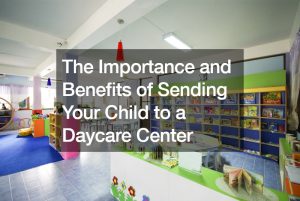
The Importance and Benefits of Sending Your Child to a Daycare Center

A Parent’s Guide to Finding a Fun Children’s Museum in California
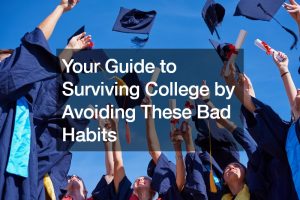
Your Guide to Surviving College by Avoiding These Bad Habits

Debunking the Myth of Roberto Nevilis: Who Really Invented Homework?

Is the D Important in Pharmacy? Why Pharm.D or RPh Degrees Shouldn’t Matter

How to Email a Professor: Guide on How to Start and End an Email Conversation

Grammar Corner: What’s The Difference Between Analysis vs Analyses?

What is a Post-Secondary Degree, and Do I Need One?

Quick Degree Finder
Part of the American dream has always been to send your children to college so they could obtain their degree. Despite a struggling economy, the last decade has seen record numbers of people seeking higher education. In 2019 alone, nearly 20 million Americans enrolled in colleges and universities to receive their degree, and experts are expecting this number to increase over the coming years .
And it’s not just wealthy families that are sending their kids to college. Recent surveys have found more low- and middle-income families are making higher education a priority.
If you have been wondering about getting a post-secondary degree – what it was exactly and if it was something that could help you earn more – be sure to read this entire article , because I’m going to share absolutely everything you need to know about post-secondary degrees.
Let’s get started!
What is a Post-Secondary Degree?

To keep things simple, a post-secondary degree is one that a person can obtain once they’ve received their high school diploma or GED. Post-secondary degrees may come from a community college, vocational school, an undergraduate college or a university.
These degrees show prospective employers that you have taken the time to receive specialized skills and knowledge. Beyond helping you stand out from other candidates come hiring time, post-secondary degrees can help you earn more – and in some cases – quite a bit more!
Types of Post-Secondary Degrees
As I mentioned, a post-secondary degree lets prospective employers know you have obtained specialized skills and information. But there are different types – or levels – of post-secondary degrees, and each one connotes a different level of expertise.
Associates Degree
Associates degrees are typically obtained in two years at either a community college or vocational/technical school. These degrees offer students a higher understanding of different professional settings and prepares them for entry-level work.
An associates degree can also be counted as the first two years of a 4-year bachelor’s degree. Many students, particularly adult students, will obtain their associates degree in order to get their foot in the door of their chosen field. Later, they can use this degree to jumpstart their next leg of education and obtain their bachelor’s degree, which will provide further employment and earnings opportunities.
Recommended Schools
Bachelor’s Degree
When we hear the term “college degree,” most people think of the classic 4-year bachelor’s degree. This is the most popular post-secondary degree people earn.
Bachelor’s programs provide a more holistic educational experience because they not only teach employable skills, but also academic subjects that help sharpen the students’ critical thinking skills.
While it typically takes students four years to earn a bachelor’s degree, it can sometimes take six or even eight years to complete. This is usually due to financial reasons, however. If you’re interested in obtaining a bachelor’s degree, be sure to read this article all the way to the end because I’m going to share how you can earn your bachelor’s degree for less money and even cut your time in half!

Master’s Degree
Once you have obtained your bachelor’s degree you may choose to go on and pursue a master’s degree. These programs allow students to gain even more expertise around a particular field of study. Depending on the program, master’s degrees typically take an additional two to three years to complete. Once obtained, these degrees can help you advance your career into management roles and earn much higher salaries.
Obtaining a doctorate degree is the highest academic achievement a person can attain. Holders of Ph.Ds. are usually in top positions in their field and earn much more. How much? Keep reading, I’m about to let you in on some salary secrets !
The Benefits of a Post-Secondary Education

At this point you hopefully understand what a post-secondary degree is. But you may still be wondering if obtaining one of these degrees is worth the time and cost.
The following are just some of the benefits of earning a post-secondary degree.
Higher income
I have been alluding to the fact that obtaining a higher degree usually leads to greater earning potential. According to a new report from the Georgetown University Center on Education and the Workforce (CEW), those who have obtained their post-secondary degree can expect to earn quite a bit more than those with only a high school diploma.
Of course, when it comes to earning potential, other factors come into play, such as field of study, occupation and location of your employment. So for instance, someone with a master’s of fine art degree may not earn as much as an engineer with only a bachelor’s degree.
Having said that, surveys taken over the years, including this recent one, have found certain generalized statements, such as those with even an associates degree can expect to earn 20% more than those with a high school diploma or GED.
Those with bachelor’s degrees can expect to earn between 35% and 85% more than those with only a high school diploma, while those with master’s degrees and Ph.Ds. can earn between 85% and 100% more than those with only a high school diploma.
So, if you are someone who is looking to advance your career and start earning more, getting a post-secondary degree makes a lot of sense!

Better Employee Benefits
You may not know this, but jobs that require you to have a bachelor’s degree or higher typically offer better job benefits. For instance, you may find your employer offers healthcare coverage, retirement plans, paid time off and other awesome perks.
More Career Options
It’s simple really: the higher you go with your education, the more career opportunities are available to you. While someone with an associates degree will be able to seek entry-level employment, someone with a master’s degree or Ph. D. will fill the highest positions and earn the highest salary.
Having said that, I want to make it clear that master’s degrees and Ph. Ds. are not necessary to have a rewarding and lucrative career. Many people have the career of their dreams and earn a great salary by earning a bachelor’s degree.
Job Security
If you’ve been in the job market over the last decade, you know that when the economy struggles, employers need to make cuts. Without question, those employees who have the most skills and expertise offer the most value to their employers and therefor have greater job security.
Job Satisfaction
We spend eight hours a day (or more) five days a week (or more) at our jobs. That’s a lot of time dedicated to something you may not like doing. Life just feels better when we love our work. Often, the careers that bring those most meaning and purpose into our lives, such as those in healthcare, science or education, require a post-secondary degree.
This isn’t by any means an exhaustive list of benefits, but these give you an idea of why you may seriously want to consider obtaining your post-secondary degree.
Cons of a Post-Secondary Education
Of course, to decide if a post-secondary education is right for you, you’ll also want to take into consideration a couple of cons, namely:
- It’s Expensive!
Obtaining a college degree is a definite financial commitment. And when you hear about students graduating with a mountain of student loan debt, it can stop you from following your dreams.

There are other common ways to pay for college such as applying for grants and scholarships. Unfortunately, what many students don’t realize is, this endeavor often takes a lot of time with no real payoff. There are only so many grants and scholarships to go around, and so most people will waste hours applying and never see any financial help.
Fear not – there is a simple way to save money toward the cost of college tuition, and I’m about to share that with you in just a moment.
Traditional College Degrees are Hard to Obtain for Adult Students
If you’re a working adult with family responsibilities, it can be next to impossible for you to put your life on hold so that you can move to another state to attend college for four years! Even attempting to take evening classes at your local community college can be a challenge when you have a growing family.
Without question, these two cons are why so many adults give up their pursuit of higher education. And that’s too bad because as we’ve seen, earning a post-secondary degree can be life changing!
Well, the good news is, there is any easy fix for these two problems. Earn your post-secondary degree online!
Can I Really Earn My Post-Secondary Degree Online?

Yes, you really can. In fact, according to one recent article in US News, over 6 million students have found earning their college degree online to be the fastest and easiest way to do it!
Here are some of the main benefits of earning your post-secondary degree online:
It’s More Affordable
Traditional college tuition can cost tens of thousands of dollars. It’s getting harder and harder for the average person to be able to afford this.
An online education, on the other hand, costs just a fraction of a typical education. You see, a physical brick and mortar school has a lot of operating expenses, and those expenses get passed onto you, the student.
Online degrees don’t have these same operating expenses and so you can save a ton. In addition, OnlineDegree.com can help you find even better ways to save. We’ve partnered with accredited colleges and universities across the country that not only offer online courses, they also offer upfront tuition discounts.
And as if that isn’t incredible enough, OnlineDegrees.com offers our students FREE classes for credit. You read that right! Take as many FREE classes as you’d like, then apply those later toward your degree. We’ll connect you with those programs that will accept these credits, thereby saving you EVEN MORE money and helping you earn your degree in far less time!
Hey there win/win!
If you’re a working adult raising a young family, you’ll be happy to know that earning your degree online offers a lot of necessary flexibility. Real life can often get in the way of your evening or weekend classes. Your boss may ask you to stay late, or your kid may get sick.
When you earn your degree online, you study when and where is most convenient for YOU. Set your own schedule and never have to worry about missing work or an important family event ever again!

Adult Friendly
Many institutions that offer online degree programs go out of their way to be adult friendly . This means in addition to being more flexible and affordable, these programs also do things like waive the need to submit SAT or ACT scores and also have open admissions. With open admissions, you can sign up for a post-secondary degree 24/7 365. You DON’T have to try and get your application package in by a specific date like most traditional colleges require.
Are You Ready to Get Started with Your Post-Secondary Degree?
I hope this article has answered any questions you may have had about post-secondary degrees. Without question, earning a post-secondary degree can help you build a rewarding career that offers numerous opportunities and a great salary.
And now you know you can earn this degree online far faster and more affordably than you ever thought possible!
OnlineDegree.com is 100% free for you to use . We provide you the tools to meet your education goals so you can learn your way to a more satisfying and prosperous life. By using our Smartplan , you can easily find ways to save time and money in just a few mouse clicks.
Our Smartplan will help you find:
- FREE courses you can take for credit
- Available tuition discounts
- Schools that are “adult friendly” and offer flexible enrollments and course schedules
- Schools that don’t require SAT or ACT scores
- And much more!
It only takes two minutes to sign up and get started on your journey toward earning your post-secondary degree and a brighter future .
What are you waiting for? Get started today .
Related Articles

How to Be Successful in College in 2022 – 7 Simple Tips to Succeed

How Do Scholarships Work? Read This First…Truth is Shocking

7 Best College Majors 2024: What Should I Major In?

How to Choose a College – 10 Things You Must Consider in 2024

Why Go to College? Top 13 Benefits for Adult Students in 2022

Top 5 Best Alternatives to Community College for 2024
About the author, grant aldrich.
Postsecondary Education
Postsecondary Education , also known as tertiary education, is the education level that follows the successful completion of secondary education, often referred to as high school. Postsecondary education includes universities and colleges, as well as trade and vocational schools. Postsecondary education usually culminates with a diploma, certification or academic degree.
Postsecondary education is decentralized from regulation by the federal government and is essentially independent from it. Postsecondary education is often diverse because there are private and public institutions. Some institutions are small and affiliated with religious organizations, while others could be secular, rural, urban, or suburban.
Product Overview
Teaching resources, further reading.

The Ultimate Guide to Metacognition for Post-Secondary Courses

James Lang’s Distracted: Why Students Can’t Focus and What You Can Do About It
More terms starting with p, partial outlines, pausing in lecture, the new higher ed value equation.
Discover what it takes to meet the evolving needs and expectations of today’s students.
- Apprenticeships
- South Africa
- Tuition & Aid
- Eligibility Quiz
- Request Info
- Alumni Stories
- Community Hub
- News & Press
- For Educators
What is Post Secondary Education?
What is post-secondary education.
Your education is a journey to prepare you for the life you want to lead, and there are many possible paths to explore after graduating high school. Post secondary education opportunities can allow you to dive deeper into your interests and discover your true passions. Many post secondary education programs offer more hands on learning experiences that provide clarity about what you want to do with your life.
In this post, we outline the most common post-secondary education options available after high school. But first things first: What exactly is post-secondary education?

Post Secondary Education: Meaning and Definition
As one might expect, post-secondary education comes after secondary education (also known as high school, which is the final phase of basic education). Post-secondary education is also known as third-level education , higher education , or tertiary education , and is an optional educational path for those who have completed their high-school or GED requirements. The goal of a post-secondary education program is to further train students in specialized skills, preparing them for more-advanced career and life opportunities.
Post-secondary education programs generally (but not always) culminate in a degree or other form of certification, verifying that the student has completed all associated requirements and is ready to graduate from the program. Post-high school education options that do not award degrees are usually called continuing education , and may include workshops, seminars, and other supplemental opportunities. That said, both of the terms “continuing education” and “post-secondary education” may also be used to describe any form of education available after secondary education.
Types of Post Secondary Options
While for many, “post-secondary education” is synonymous with college , the truth is that high school graduates have a number of different options to choose from for structured learning after high school. Consider these different types of post-secondary education programs:

Vocational Schools
Vocational schools (also called trade schools or technical schools ) offer specialized education designed to prepare students for specific lines of work. Compared to a college education, which is usually more academic-focused, vocational programs tend to be more hands-on, experience oriented, and tailored towards practical career knowledge. Additionally, by eliminating many of the general-education and liberal-arts requirements found in colleges, vocational schools may offer a more direct route into the job market. This is the result of job-specific training opportunities and shorter completion times.
Vocational schools typically funnel students directly into careers in skilled trades. Examples of vocational courses include: healthcare and home caregiving, plumbing, electrical services, hairstyling, carpentry, computer network management, paralegal studies, massage therapy, and more.
Community Colleges
Community colleges are shorter-duration alternatives to the traditional four-year university experience. Most community colleges allow students to earn an associate degree over the course of two years, focusing primarily on the general-education classes required by accredited universities. They sometimes also offer non-degree certification and vocational training.
Most community colleges are open admission , meaning that the admission process is non exclusive, and not dependent on any academic factors other than a high school diploma or equivalent certification. After earning their associate degree through the community college, students may either enter the job market with increased training and certification, or choose to transfer to a four-year college or university to pursue a specific major and earn a bachelor’s degree.
Colleges and Universities
Colleges and universities are generally what first come to mind when people think of post-secondary education. These higher-education institutes offer bachelor degree (four-year) programs. Additionally, students may choose to continue their education past the BA/BS level; colleges and universities tend to offer post-graduate programs, allowing dedicated individuals to earn master’s degrees or doctorates. Completing a four-year college program may make some graduates more appealing to job interviewers, and there are a number of companies that won’t even consider applicants unless they have at least a bachelor degree. On the other hand, colleges and universities are usually the most-expensive post-secondary education options — averaging approximately $28,000 in tuition annually. However, many different scholarship and grant programs exist to help offset some of these costs; prospective students should research these possibilities while considering post-secondary options.
Fellowship and Abroad Programs
Many post-secondary students want to take the time to travel, see the world, and enjoy the freedom that comes from having completed their high school education. At the same time, many feel the desire to use this time to better themselves, learn valuable leadership skills, and give something back. For these students, fellowships and abroad programs may be the answer they’re looking for.
Fellowship and abroad programs offer experiential learning, hands-on training, and real-life opportunities to help and connect with individuals around the world. Students often pursue these opportunities during a ‘gap year’ (either after high school and before college, or between college years). Many gap-year programs combine education and service, and are designed to produce well-rounded, socially conscious individuals who are ready to excel in whatever careers or life paths they choose.
If you are looking to grow your leadership skills and connect with people from around the world, but aren’t drawn to an abroad experience, there are also many opportunities for you! Consider an online leadership program to connect with likeminded young people from around the world, and together build leadership skills to help solve global challenges.

Get the Most out of Your Post-Secondary Opportunities
If you’re interested in pursuing a post-secondary education, you have a lot of different options to consider. But if you want something that expands your worldview, strengthens your leadership skills, and allows you to interact with new people and cultures, then why not apply for an immersive fellowship abroad or a virtual leadership program? Global Citizen Year is a non-profit organization offering opportunities to enhance your post-secondary education. Make global connections, get hands-on learning opportunities, and gain the experience needed to change the world for the better.
Learn more about Global Citizen Year , and turn your post-secondary education into an opportunity of a lifetime!
EXPERIENCE A DAY IN THE LIFE OF A GLOBAL CITIZEN YEAR FELLOW

Fellow / Ecuador
— Anna del Savio
I work with a group of indigenous artisans that make fair trade jewelry. …

Fellow / Brazil
— Amari Leigh
After my community garden apprenticeship, I like to hang out at the local waterfall with my friends. …

— Basil Wiering
I often hail a rickshaw into various parts of the city to meet friends and practice street photography. …

— Fernanda Tornell
I've developed my public speaking skills and encouraged hundreds of people to take care of our planet. …

Fellow / India
— Luciana Ribeiro da Silva
I apprentice with Teach For India and also volunteer with a non-profit working to end child marriage. …

— Noah Hapke
I co-teach English classes at the school in my community. …

— Sarah Murray
My apprenticeship is at a school for people with disabilities where I help to lead gardening, games, and capoeira. …

— Alana Poole
In the afternoons, I often go on home visits to meet my students' families and understand where they come from. …
REQUEST INFO
For potential applicants, sign up here to learn more. We'll help you decide if Global Citizen Year is right for you! Not a student? Please visit our newsletter form to request info.
College and Career Readiness Guide

Redefining what it means to be ‘college-ready’
According to research and the 2018 national superintendent of the year, preparing students for the future is more about creating a personalized pathway than teaching to a test.
Societal pressures on high school seniors seemingly grow by the year. These days, a student’s level of college and workforce readiness is said to be dependent on their college admission test scores, completing the most rigorous high school classes possible, and obtaining AP credit. But research shows that these are not the sole indicators.
ACT recently released a report that claims only 26 percent of 2018 high school graduates were ready for the workforce, but I believe readiness is dictated by so much more than a standardized test score.
Related content: 4 keys to supporting college and career readiness
For example, research from the University of California Berkeley found that high school GPA is the best indicator of grades during freshman year in college as well as college graduation. Of course, I don’t presume that everyone should go to college.
Being college-ready vs. post-secondary-ready
When educators say they want students to be “college-ready,” it’s easy to assume we mean a four-year degree. What we really mean is “post-secondary ready.” If an individual wants to earn a family-supporting wage over the course of their work lifetime, they need access to some form of post-secondary education.
For example, if their goal is to become a police officer or a firefighter, they’ll have to learn how to move through the ranks. Though college might not be the path for them, they will need to demonstrate proficiency and take coursework. I did a presentation on this topic in southern Illinois and somebody asked, “What if I want to be a family farmer?” Before I could respond, three people piped up, saying that farmers need to understand things like crop rotation, agribusiness, and irrigation. Every profession requires a level of expertise in some niche area. Having access to post-secondary coursework is a way everyone can stay relevant and nimble as an individual who wants to support themselves and possibly a family.
To move beyond these generalizations to some hard data, I asked the director of research and evaluation in my district, Township High School District 214, if we could do a meta-analysis revolving around what it actually means to be college and career ready.
Data-backed indicators
The research we compiled turned into what is now Redefining Ready! , a national initiative launched by AASA that provides college and career readiness indicators that are research-based rather than dependent solely on a test score. Our data shows that a student is ready for college if they have a GPA of at least 2.8 out of 4.0 plus at least one of the following:
• 3 or higher on an Advanced Placement exam; • An A, B, or C in an Advanced Placement course; • An A, B, or C in a dual-credit college English and/or math class; • An A, B, or C in a college developmental/remedial English and/or math class; • An A, B or C in Algebra II; or • 4 or higher on the International Baccalaureate Exam.
Also, if a student has identified a career interest and meets at least two of the benchmarks listed below, we deem a student career ready.
• 90 percent attendance; • 25 hours of community service; • workplace learning experience; • industry credential or certification; • a dual-credit career pathway course; or • two or more organized co-curricular activities.
Whether a student is aiming for college or the workforce, school districts should be able to create a personalized pathway that fits each student’s vision for their future.
Creating a personalized pathway
Our district has worked hard to personalize students’ experiences to make sure they have access to advanced coursework that is relevant to their career goals. To provide students opportunities to pursue their passions, and to ensure that high school education remains a positive, encouraging, and engaging experience, we have implemented what we call the Power of 15 initiative, which allows every student in our district to have access to a minimum of 15 early college credits before they graduate. That’s an entire college semester! In the graduating class of 2018, one-third of our students earned 15 or more college credit hours and 76 percent of students in this class had earned college credit.
Students choose courses based on their desired career trajectory. For example, if a student knows they want to pursue a STEM-related field, taking a college-level calculus 3 course makes perfect sense. Throughout their elementary and secondary schooling, they have been told what to do and how to do it. By giving students this opportunity, we are allowing students to take control of their future. That sense of responsibility is something students need to have in college and the workforce.
A crucial aspect of being career-ready is identifying a career interest. Many students struggle to dream beyond their current context. It is our job as educators to plant new dreams in the minds of our students and their families.
Taking a broader view of college-readiness benefits our educators, too. Our educators teach because they love to teach and their hearts fall when you tell them to teach to a test. It is wonderful to unleash the power and joy of educators. They get fired up about work because they see the relevance and the engagement in their students’ eyes.
- Recent Posts
David Schuler, PhD., is superintendent for Township High School District 214 in Illinois, 2018 Superintendent of the Year, and founder of Transeo, a data-driven community service tracking and postsecondary readiness software.
- Understanding learning styles via Gardner’s Theory of Multiple Intelligences - May 1, 2024
- Envisioning the personalized edtech of tomorrow - May 1, 2024
- How to support student agency - May 1, 2024
The Edvocate
- Lynch Educational Consulting
- Dr. Lynch’s Personal Website
- Write For Us
- The Tech Edvocate Product Guide
- The Edvocate Podcast
- Terms and Conditions
- Privacy Policy
- Assistive Technology
- Best PreK-12 Schools in America
- Child Development
- Classroom Management
- Early Childhood
- EdTech & Innovation
- Education Leadership
- First Year Teachers
- Gifted and Talented Education
- Special Education
- Parental Involvement
- Policy & Reform
- Best Colleges and Universities
- Best College and University Programs
- HBCU’s
- Higher Education EdTech
- Higher Education
- International Education
- The Awards Process
- Finalists and Winners of The 2022 Tech Edvocate Awards
- Finalists and Winners of The 2021 Tech Edvocate Awards
- Finalists and Winners of The 2020 Tech Edvocate Awards
- Finalists and Winners of The 2019 Tech Edvocate Awards
- Finalists and Winners of The 2018 Tech Edvocate Awards
- Finalists and Winners of The 2017 Tech Edvocate Awards
- Award Seals
- GPA Calculator for College
- GPA Calculator for High School
- Cumulative GPA Calculator
- Grade Calculator
- Weighted Grade Calculator
- Final Grade Calculator
- The Tech Edvocate
- AI Powered Personal Tutor
College Minor: Everything You Need to Know
14 fascinating teacher interview questions for principals, tips for success if you have a master’s degree and can’t find a job, 14 ways young teachers can get that professional look, which teacher supplies are worth the splurge, 8 business books every teacher should read, conditional admission: everything you need to know, college majors: everything you need to know, 7 things principals can do to make a teacher observation valuable, 3 easy teacher outfits to tackle parent-teacher conferences, post-secondary education: everything you need to know.

This is used to describe any type of education occurring after high school/secondary school. While post-secondary education isn’t mandatory, it offers added advantages because it helps students get additional education and develop various skills, which may increase their chances of securing higher-level employment. Students should also consider the salary difference. A significant percentage of high school graduates choose to receive post-secondary education because the mean annual salary of a college graduate is far better than that of a high school graduate.
Students planning to receive post-secondary education can choose from different types of post-secondary education institutions.
Colleges and universities: These are the two most sought-after choices for post-secondary education. Some students attend post-secondary education institutions, such as business schools and graduate schools, to earn a master’s degree that gives them a leg-up in the competitive job market. While colleges and universities are usually the most expensive forms of post-secondary education, several grants and scholarship programs are available that can help ease students’ financial burden.
Community colleges: By attending community colleges, students can earn an associate degree after two years. Some community colleges also offer vocational courses and non-degree certificates. Apart from academic classes, these colleges offer various programs for the community. It’s important to understand that community colleges take just two years to award an associate degree because they only offer general education courses that all college students must take. In four-year colleges and universities, students spend the first two years meeting the general education requirements and the next two years taking specialized classes depending on their majors.
Vocational schools: These schools teach students the technical sides of certain skills or crafts of a particular job. Unlike colleges that provide students with academic training to pursue careers in specific professional disciplines, vocational schools provide job-specific training where certain skills are prioritized over academic learning. While there’re many different types of vocational courses available, not all vocational schools provide all kinds of vocational courses. By completing any of these courses, a student receives a certificate that demonstrates they are trained for the skill of their choice. Students may also earn multiple certificates for multiple courses if they think it’ll give them a further advantage.
Apart from these, some students may choose to receive non-degree post-secondary education. Non-degree students are individuals who may be interested in learning a certain field and want to pursue academic interests but don’t want to earn a degree. By completing such a program, students can earn a certificate of completion instead of an associate’s degree.
21 Ways to Teach Kids to Take ...
Strategies to implement for children with learning ....
Matthew Lynch
Related articles more from author, what can be done to improve the success of black male students.

What is College-Readiness?
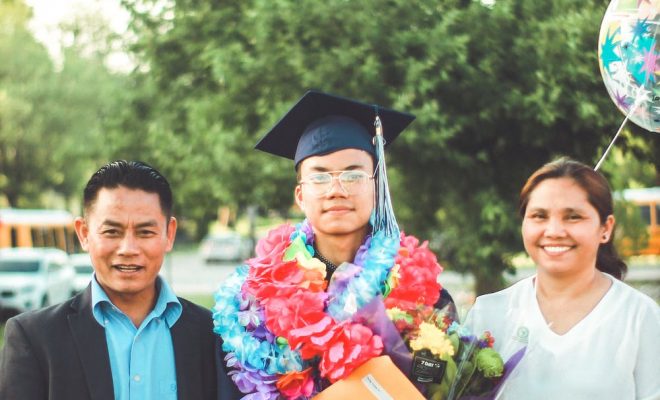
SUNY College of Environmental Science and Forestry Admissions: Everything You Want to and Need to Know

University of Northwestern Admissions: Everything You Want to and Need to Know
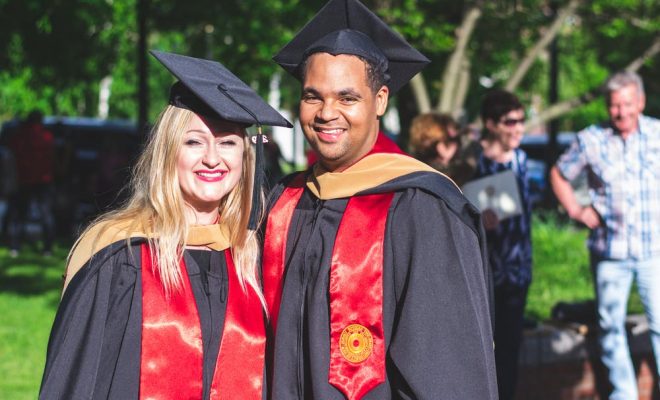
So You Want to Attend Graduate School: The 411 on Grad School Admissions Tests

Chapman University Admissions: Everything You Want to and Need to Know

How Post-Secondary Education Sets Up Students for Success
By: Author Dr. Patrick Capriola
Posted on Published: November 1, 2019

Students entering their junior year should consider what is going to come next after their diploma. For many, it will be post-secondary education
What is post-secondary education? Post-secondary education is a path to higher learning through colleges, universities, institutes of technology, academies, vocational or trade schools, or seminaries. It is the education adults pursue to earn degrees, learn a trade, or gain career-specific skills as they seek a better quality of life and a more fulfilling career.
Traditional Types of Post-Secondary Education Institutions
The traditional institutions for higher education are the community college and the university. There is more to each than meets the eye, and it is important to understand what each offer.
Community Colleges
A typical community college offers associate degrees, which are completed in two years, but that is not the only option. In order to keep up with the demand for more opportunities in postsecondary education, community colleges also offer trade certifications, from manufacturing and industry careers to healthcare fields.
Benefits provided by community colleges include smaller campuses, smaller class sizes, and more individualized attention. Most undergraduate students (40 percent) attend community colleges, but the campuses also attract adults and elders, known as non-traditional students (“Community College: FAQ,” 2019).
Sebastian had heard from his friend, Hannah, that the local community college was holding an open house that night, so he and his parents attended. While there, they discovered some of the advantages community colleges offer (“Community College: FAQ,” 2019):
- Open admission (even students without top grades may try out classes)
- Low tuition rates (community college credits cost less than university credits)
- Flexible course schedules (courses offered at different times of the day and night)
- Transferability of credits (coursework may be transferred to university studies)
Sebastian and his parents also learned about programs offered to students while still in high school. These programs would give him the opportunity to take college classes and earn credit both at the high school and at the postsecondary level. Emma, Sebastian’s mother, was excited to hear more.

Earning Credit While in High School
In recent years, community colleges have partnered with high schools to create dual credit and concurrent credit programs designed to give students a head start on their coursework (Bangser, & Michael, 2008)
Dual Credit Programs. Students interested in dual credit classes sign up as they would for any high school course. The classes are taught by trained high school teachers during regular school hours. There is little-to-no disruption in a student’s day because the classes are also held in the same building, and the only difference is in the level of difficulty. Credits earned apply to both high school and college. Best of all, classes are offered free of charge to students who qualify.
Concurrent credit programs. In this case, students sign up for college classes taught by college faculty instead. Like the dual credit programs, however, students earn both high school and college credits at once. One benefit of this program is introducing high school students to the rigors of higher education in a smaller dose.
Sebastian’s cousin had enrolled in a concurrent program while a senior in high school. She explained that while the workload was much heavier than her regular classes, the support she received from both her secondary and postsecondary schools gave her a positive experience.
The best part, she said, was the ability to graduate from high school with most of her early core classes already completed. It saved her both time and money in the long run. Sebastian’s parents, Daniel and Emma, were thrilled to hear the news. Perhaps they had found a solution, but more research was required.
Universities . A university is different from a community college in a few ways. Rather than a two-year, associate degree, students may earn a four-year bachelor’s degree. After that point, there are also options for graduate degrees, varying from a master’s, Master of Fine Arts, doctorate, or advanced medical and law degrees.
While community college students do not live on campus, university students do have that option. Student housing covers living expenses such as rent, utilities, and Internet access. In addition, universities increasingly offer more amenities such as flexible food plans, gym memberships, lounges, and updated classrooms.
Daniel decided to discuss university options with his son’s counselor at school. When he asked her for more information, Sarah, Sebastian’s counselor, introduced him to both private and public university opportunities.
She explained that public universities are government-funded, while private universities are funded by endowments and student tuition fees. As a result, private institution tuition and fees are more expensive than public ones.
Why is Postsecondary Education Important for Income?
In our ever-increasingly technology-based economy, higher education is crucial to learning the skills needed for a profitable career (Bangser & Michael, 2008). Currently, the unemployment rate is low, but many of those positions are low-wage low-skill jobs.
Too many adults who work those positions must more than one job to make ends meet. In fact, “education beyond high school, and often at least a bachelor’s degree is now considered to be necessary for access to economically viable jobs” (Bailey, Thomas Kienzl, Gregory Marcotte, & David, 2004).
Statistics show that postsecondary education has a significant impact on lifetime earnings. In fact, even some higher education experience has an effect, though not as great. According to the Bureau of Labor Statistics (“Measuring the value of education: Career Outlook,” 2018), the following numbers are an eye-opener, even when it comes to a weekly salary:
Why is there such a difference? Employers look for educated workers who already have most, if not all the skills necessary to fill positions in the company. In-house training is expensive, but if an employee comes ready to work, overhead costs are lower for the owner. That means workers with at least some postsecondary education have an advantage over those with none.
That advantage means a lower unemployment rate, according to the Bureau of Labor Statistics (“Measuring the value of education: Career Outlook,” 2018):
Some College, No Degree
What if a student enrolls, but does not finish a degree program? Would that student be worse off than no college experience? Statistics show that even an incomplete postsecondary education is better than none.
Women in four-year programs who did not earn a degree earned 15 percent more than women without postsecondary education. The impact on women who did not finish community college credentials did not fare as well, but their income was still 10 percent higher. (Bailey et al., 2004).
Men also benefit, but not by as much. Male students who fell short of a bachelor’s degree earned 10 percent more, while those in community colleges earned just 6 percent more. (Bailey et al., 2004).
Associate’s Degree
While both men and women benefit from earning an associate degree, it is women who see the biggest return on investment. In 2004, women saw a 39 percent increase of income over non-degree holders, while men saw 16 percent. These numbers apply to academic degrees, but those in occupational programs who earned associate degrees earned even more (Bailey et al., 2004).
Sebastian’s little brother, Jacob, always had a passion for heavy equipment since he was a child. Daniel would take his young son to construction sites as a treat, just so he could see the “big trucks” or take him to manufacturing plants, so he could see the “big robots.”
As Sebastian and Jacob’s parents learned more about post-secondary education, they considered an occupational associate degree option for Jacob. He still had a few years to think about it, but it sounded exciting to him.
Bachelor’s Degree
Not surprisingly, a bachelor’s degree has an even larger impact on lifetime earnings. Depending upon the field of study and career, degree holders earn 55 to 66 percent more than high school graduates. In addition, following through with a degree rather than completing just one year yielded four times the return on investment (Bailey et al., 2004).
There were so many career fields that interested Sebastian: engineering, aviation, and even architecture, yet he had little experience with any of them. Could he decide while attending a university? Sarah, Sebastian’s school counselor, told him yes.
The first two years at a university are dedicated to general studies, called “core classes.” Even within required core classes, students are offered options. The purpose of these courses is to help students solidify core skills (hence the name) and settle on their major. A major is a specific field in which a student earns a degree, and the later years are spend devoted to those studies.
Graduate Degree
A graduate degree is considered anything beyond a bachelor’s degree, including a master’s, professional, and doctoral. Depending upon the occupation, those with graduate degrees do earn more than those with bachelor’s, but that is not always so.
High school students just beginning the journey into post-secondary education and their parents need to investigate whether an advanced degree is necessary for their chosen career before assuming it is necessary.
Master’s degrees are most commonly awarded in the business field and offered “some of the highest wage premiums for workers with a master’s degree” (“Should I get a master’s degree? Career Outlook,” 2015). Education is not uniformly beneficial to degree holders.
Postsecondary teachers with a Ph.D. earned the lowest wage premiums in part because the degree is necessary for entry-level work (“Should I get a master’s degree? Career Outlook,” 2015), while careers in the STEM and healthcare fields held varying degrees of payoff for graduate degrees.
Other Reasons Why Post-Secondary Education is Important
Sebastian had heard all the monetary reasons why he should continue with his education, but he wasn’t sure if there were any other reasons for doing so. He caught his favorite teacher in the hall at school one day to ask what she thought.
“Ms. Grey, why should I go to college. I mean, I get that I’ll make more money, but is there any other reason? It sounds like a lot of time, effort, and money for just a piece of paper,” Sebastian asked.
“I’m glad you asked me,” his teacher replied, “Actually, there are quite a few reasons.”
Financial Contributions
College graduates can contribute more to federal, state, and local governments (“The Benefits of Higher Education,” 2018). As a result, government entities:
- Receive greater tax revenues
- Spend less on Food Stamps and National School Lunch Programs
- Spend less on social support and incarceration costs
Civic Contributions
College graduates also enjoy health and civic benefits that in turn benefit others (“The Benefits of Higher Education,” 2018). Those benefits mean they are more likely to:
- Earn pensions and health insurance
- Lead healthier lifestyles, leading to reduced health care costs
- Actively “engage in educational activities” with their children, making them “better prepared for school than other children.”
- Donate time to volunteer activities
Negotiating Finances

There are several options when attempting to pay for post-secondary education. There are federal and state student aid programs, institution-based programs, and non-profit or private organizations.
The most important thing to remember is filling out the FAFSA (Free Application for Federal Student Aid) form every year. The form is necessary in order to apply for any kind of financial aid. The following information is provided from the Federal Student Aid Office , which is part of the U.S. Department of Education (“Types of Aid,” 2019):
Federal and State Financial Aid
- Grants (financial aid that does not require repayment unless the student withdraws from school)
- Work-Study (financial aid through work to help pay for school)
- Loans (financial aid that is borrowed and later paid back with interest)
Institution-Based Programs
- Scholarships (financial aid that does not require repayment unless the student withdraws from school)
Non- Profit or Private Organizations
- Scholarships and Grants (financial aid that does not require repayment unless the student withdraws from school)
Other Forms of Financial Aid
- Tax benefits
- Aid from military service
- Aid from being the child or spouse of a veteran
- Education Award from AmeriCorps service
- Educational and Training Vouchers for “current and former foster care youth”
- Loans and scholarships through the Department of Health and Human Services
How Parents Can Help
After Sebastian, Jacob and their parents had looked through all the materials, they were ready to make decisions for the future; however, they also wanted to prepare while they had time now. There were several skills they discovered Sebastian and Jacob would need:
- Resilience (College is not meant to be easy, and students need the mental fortitude necessary to recover from challenges and setbacks. Fortunately, it is something that can be learned and modeled by parents.)
- Resourcefulness (Students have many resources at hand, but they need to know when and how to ask for help)
- Resistance (Mental health and substance abuse issues are prevalent among college students. Both students and parents can work together to communicate, encourage, and act if problems arise)

Final Thoughts
A post-secondary education is important for numerous reasons: financial, health, and civic stability. Beyond external factors, however, is the opportunity for students to learn critical thinking skills. Those skills allow them to decipher all the messages that constantly bombard all of us. As a result, they become better workers, consumers, and citizens.
Parents can help their children reach these goals by modeling self-reliant behavior, supporting educational goals, and helping to navigate the financial aid process. Beyond that, parents may keep the lines of communication open and be supportive.
Bailey, Thomas Kienzl, Gregory Marcotte, & David. (2004, July 31). Who Benefits from
Postsecondary Occupational Education? Findings from the 1980s and 1990s. CCRC Brief Number 23. Retrieved from https://eric.ed.gov/?id=ED489103 .
Bangser, & Michael. (2008, July 31). Preparing High School Students for Successful Transitions to Postsecondary Education and Employment. Issue Brief. Retrieved from https://eric.ed.gov/?id=ED502596 .
The Benefits of Higher Education. (2018). Retrieved October 13, 2019, from
https://www.csuohio.edu/sites/default/files/The%20Benefits%20Of%20Higher%20Education.pdf
Community College FAQs. (n.d.). Retrieved October 13, 2019, from
https://bigfuture.collegeboard.org/find-colleges/how-to-find-your-college-fit/community-college-faqs.
Epicantus. (Photographer). Retrieved from
https://pixabay.com/photos/teen-female-girl-teenage-youth-954378/
Geralt. (Photographer). Retrieved from
https://pixabay.com/photos/book-read-student-students-board-4126483/
Manufacturers Stress Skills Gap Crisis on Manufacturing Day. (2019, May 23). Retrieved from
https://www.nam.org/manufacturers-stress-skills-gap-crisis-on-manufacturing-day-883/?stream=series-press-releases.
Measuring the value of education: Career Outlook. (2018, April 22). Retrieved from
https://www.bls.gov/careeroutlook/2018/data-on-display/education-pays.htm.
The NCES Fast Facts Back to School Statistics (National Center for Education Statistics).
(2019). Retrieved from https://nces.ed.gov/fastFacts/display.asp?id=372 .
QuinceMedia. (Photographer). Retrieved from
https://pixabay.com/photos/mentor-school-students-college-3512369/
Robtowne0 (Photographer). Retrieved from
https://pixabay.com/photos/graduation-man-cap-gown-education-879941/
Should I get a master’s degree? Career Outlook. (2015, September 1). Retrieved from
https://www.bls.gov/careeroutlook/2015/article/should-i-get-a-masters-degree.htm.
Types of Aid. (2019, February 17). Retrieved October 14, 2019, from https://studentaid.ed.gov/sa/types .
Post-secondary Education
The continued shift to a knowledge-based economy means the best opportunities for job prospects and upward mobility will require education and training beyond high school.
Rates of college readiness and enrollment in the region are stagnant or in decline, and not enough Houston-area students earn post-secondary credentials after high school. The effects of the COVID-19 pandemic have only exacerbated challenges in higher education, particularly among students who have been historically underrepresented, such as Black, Indigenous, and other People of Color.
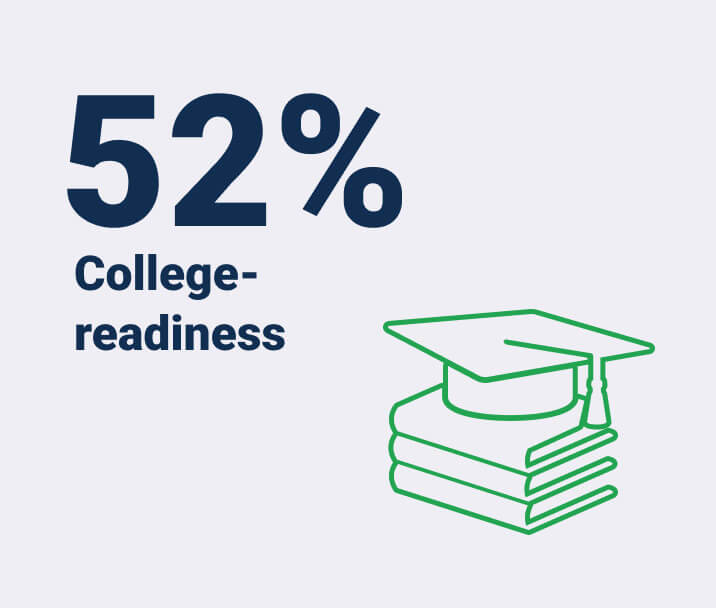
Half of high school graduates from Houston’s three-county region were classified as “college ready” in 2019-20.

Of Houston-area public high school graduates in 2019 enrolled in a public two- or four-year college in Texas the following fall.
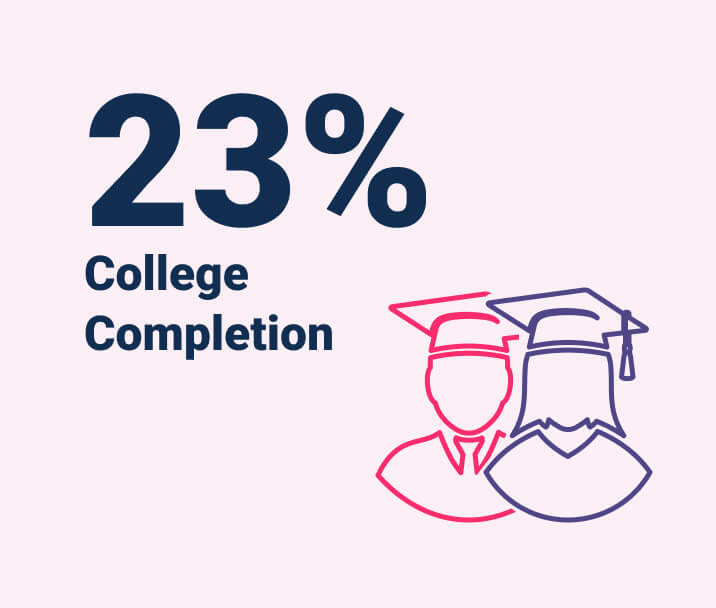
Less than one in four 8th graders in the region earn a postsecondary credential by the time they are 25 years old.
Why post-secondary education matters to Houston
Many Houstonians recognize the importance of pursuing a college education. Nearly half of Harris County residents agree that “in order to get a job that pays more than $35,000 a year, you need to have at least one or two years of education beyond high school,” according to the 2020 Kinder Houston Area Survey . Given the lagging college graduation rates in Texas and the implications for future economic prosperity, in 2015 Texas launched the 60x30TX higher education plan. One of the four goals is that 60% of Texans aged 25-34 will have a certificate or degree by 2030. According to the most recent progress report released in 2021, the state is at 45.3%. The challenge, however, is not only in convincing people that college is an important, worthwhile, enriching endeavor with myriad personal, economic, and social benefits, but also in adequately supporting students for that pathway whether they choose to pursue it or not. This includes ensuring all students receive a high-quality primary and secondary education (regardless of where they live or household income) so they are prepared for the academic demands of higher education; providing plenty of information so they select the institution that will best support their academic goals and objectives; keeping college affordable so all students have the opportunity to attend — not just those with the most financial resources and privilege — and supporting students throughout their entire college careers so they can persist and ultimately finish their degrees. In a region as diverse as Houston’s — not only in terms of race/ethnicity, but also income and place of birth — these are critical to provide for all students, particularly those who have been historically underrepresented in higher education and who have lacked access to opportunities and resources because of the legacy of state-sponsored systemic discrimination. Understanding the various challenges and obstacles Houston-area residents face in their higher education pursuits is key to developing intervention and support strategies to ensure everyone in the region has the chance to successfully attend college and finish with a credential.
Before getting into the data about readiness, enrollment and completion, it is helpful to clarify exactly what is post-secondary education. In the simplest terms, any education or training that goes beyond traditional high school coursework is considered post-secondary education. Common post-secondary options include four-year universities, two-year community colleges, trade schools, and apprenticeships.
College readiness rates in the Houston region ticked up … and then back down
College readiness/preparedness refers to the cumulative knowledge and skills a high school graduate is expected to have upon entering higher education. It is commonly measured by GPA, participation in advanced coursework such as Advanced Placement (AP) and International Baccalaureate (IB), as well as performance on state-standardized tests or college entrance exams such as the SAT or ACT.
However, many freshmen who enroll at public Texas colleges and universities are placed into developmental (also known as remedial or pre-college) courses, a determination based on these and other test results. These courses do not typically earn college credit toward degrees but are usually required before students can begin college-level coursework.
National data show this obstacle is shared by more than a third of students nationwide. 1 Students who are required to spend one to two years in developmental education before beginning college-credit-level coursework are less likely to graduate with a degree or certificate, and if they do, take significantly longer. 2 Other studies show that when colleges consider multiple measures (such as GPA, time between high school and college, or the number of courses on the subject a student has taken) to determine college readiness, students who would have been originally placed in developmental education but take college-level coursework immediately (or simultaneously), their academic outcomes are better than if they only enrolled in developmental coursework, which calls into question the need for developmental education. 3
The Texas Education Agency offers a composite measure of College-Ready graduates that reflects the percentage of high school graduates who have met at least one of five criteria : (1) meeting the college-ready criteria on the Texas Success Initiative (TSI) Assessment (ELA/reading and math), SAT, ACT, or by successfully completing and earning credit for a college prep course; (2) earning a minimum of dual course credit hours; (3) passing at least one AP or IB exam; (4) earning an associate’s degree while in high school; or (5) earning OnRamp course credits.
The share of high school graduates in Texas classified as college-ready by these criteria has ticked up over the last three years. The state average increased from 50.0% in 2017-18 to 53.4% in 2019-20.
College-Ready High School Graduates
Percent of public high school graduates classified as college ready, by academic year
Source: Texas Education Agency, Texas Academic Performance Reports (TAPR) and Texas Performance Reporting System (TPRS) Note: Because of a change in criteria, data prior to 2017-18 cannot be compared to data after 2017-18. Retrieved 1/22/22 from https://tea.texas.gov/texas-schools/accountability/academic-accountability/performance-reporting/texas-academic-performance-reports
In 2019-20, Fort Bend County had the highest share of high school graduates in the region who were designated as college-ready at 56.7%, though this rate has declined for two consecutive years from 60.4% in 2017-18. The share of high school graduates who were classified as college-ready in Harris County ticked up between 2017-18 and 2018-19 but then dipped to 51.4% in 2019-20 — essentially unchanged over the three years. The share of college-ready high school graduates in Montgomery County was essentially flat from between 2017-18 and 2018-19 but then dipped to 54.3% in 2019-20.
Half of high school graduates from Houston’s three-county region are considered “college ready.”
For decades, the SAT (founded in 1926 and formerly known as the Scholastic Assessment Test) and the ACT (founded in 1959 and formerly known as American College Testing) have been used by four-year colleges and universities to inform admissions and scholarship decisions. However, in recent years, these tests have been less emphasized amid academic and legal claims that they are unfair to low-income, Black, Latino, and other students of color. In Texas, the COVID-19 pandemic affected the availability of test-taking opportunities to such a degree that many universities adopted “test-optional” policies for 2021 and 2022, with some extending the policy into 2023. While their popularity in admissions decisions may be in decline, these tests continue to be used to evaluate the level of academic preparedness of students.
More than 400 school districts across the state participate in SAT School Day — when students can take the SAT on their high school campus during the school day, rather than on the weekend, which is typical — at least once in the last five years. TEA has a contract through 2024-25 with the College Board, which administers the test, to negotiate a statewide rate for each exam at a discount.
Texans are much more likely to take the SAT than the ACT. According to the College Board, nearly 225,700 graduates from Texas public and private high schools in 2020-21 took the SAT compared to 89,000 who took the ACT. Texas ranks 10th nationwide for SAT participation rate (59%) but 29th for ACT participation rate (23%) .
SAT/ACT Participation and Performance
Percent of public high school graduates who took SAT/ACT and scored at or above "college-ready" criterion
Source: Texas Education Agency, Texas Academic Performance Reports (TAPR) and Texas Performance Reporting System (TPRS) Note: The criteria for the SAT is a total score of 1180/1600. The criteria for the ACT is a composite score of 24/36. Because of a change in criteria, data prior to 2017-18 cannot be compared to data after 2017-18. Retrieved 1/22/22 from https://tea.texas.gov/texas-schools/accountability/academic-accountability/performance-reporting/texas-academic-performance-reports
Regionally, the highest participation rate among graduates in 2019-20 (85.7%) was in Harris County, while the highest percentage of examinees who were at or above criterion 4 was in Fort Bend County (51.3%). Between 2017-18 and 2018-19, the percentage of graduates who took either the SAT or ACT increased the most in Montgomery County (from 63.7% to 70.7%, respectively). The share of graduates who scored at or above criterion in 2019-20 was lower than that in 2017-18 in Harris and Montgomery counties.
Participation rates vary considerably by gender, racial group and socioeconomic status. The combined SAT and ACT participation rate among public high school graduates in Texas in 2019-20 was 77% — the highest in the past decade, according to the Texas Education Agency (TEA).
SAT/ACT Participation and Performance by Demographics - Texas
Percent of public high school graduates who took SAT/ACT and the percent of examinees who scored at or above "college-ready" criterion
While SAT/ACT participation rates in Texas public schools were above 70% for most demographic groups, the share of test takers who achieved at or above criterion greatly varied by group. As with all racial/ethnic disparities in education, this is partly because of discriminatory and illegal practices that have existed since our nation’s founding (such as redlining and school segregation), exacerbated by present-day inequities (segregation’s lasting impact, poverty, disinvestment in public schools).
Texas Success Initiative (TSI) Assessment
All students who enroll in public colleges and universities in Texas for the first time must take the Texas Success Initiative (TSI) Assessment unless they scored above a certain threshold on the ACT, SAT, or STAAR End-of-Course (EOC) exams; have military experience; are transferring from another higher education institution; or are enrolling in a certificate program that can be completed in less than a year.
Students who take the TSI Assessment must meet minimum standards in the area of mathematics, writing and reading, which indicate they are prepared for freshman-level college coursework. Students who do not meet the benchmark on the TSI Assessment must work with an academic advisor and develop a plan to become classified as “college ready.”
About 61.5% of Texas high school graduates in 2018-19 who took the TSI Assessment met or exceeded the TSI college-ready criteria in all areas, according to the Texas Higher Education Coordinating Board (THECB).
College Readiness per Texas Success Initiative (TSI) Assessment
Percent of public high school graduates who enrolled in a public college or university in Texas the following fall and who met TSI minimum standards.
Source: Texas Higher Education Coordinating Board (THECB), Annual TSI High School Summary Report Note: Not included in the Met TSI Standards categories are enrollees for whom TSI minimum standards do not apply, are waived, or are exempted through military exemptions. Retrieved 1/25/22 from https://reportcenter.highered.texas.gov/reports/data/
Success rates in the three-county region on the TSI Assessment parallel that in Texas overall. About 65.0% of graduates in the region met or exceeded minimum standards on the TSI Assessment in 2018-19. Pass-rates are highest in Fort Bend County (72.6%) and lowest in Harris County (63.1%)
College Readiness per Texas Success Initiative (TSI) Assessment by Race/Ethnicity
Significant disparities can be found in the TSI Assessment success rates across race/ethnicity — ranging about 40 percentage points — and little has been done to close the gap over the past few years. This trend, sometimes referred to as the achievement gap , is actually an opportunity or access gap; it is is primarily an extension of the extreme pre-existing inequities in the delivery of pre-K through 12th grade education and its resulting disparities in academic outcomes.
College enrollment rates directly from Texas high schools have not grown in recent years
College enrollment in the U.S. has been in slight decline over the last decade, even prior to the pandemic. About 1% fewer students enrolled each fall between 2011 and 2019, resulting in a 10% decline in the number of students enrolled in all U.S. colleges, according to estimates from the National Student Clearinghouse Research Center. 5 COVID-19 only accelerated that downward trend. Fall enrollment fell by 2.5%, or 461,000 students, between 2019 and 2020, and then declined 2.7% (476,000) in 2021. The result is a 14.3% decline in enrollment in higher education since 2011 — a loss of nearly 3 million students.
For public colleges and universities in Texas, the most recent data available at publication is for graduates in 2018-19. However, the downward trends are here as well. Between fall 2013 and 2019, the percentage of high school graduates enrolled in Texas public higher education institutions each year has declined from 50.2% to 47.1%, respectively. Because students who go out-of-state or attend private universities are not trackable in this data set, this figure tells only part of the full college-going story. THECB estimates that about half of high school graduates are not tracked or identified in Texas’ public higher education system, suggesting they do not enroll, enroll out-of-state, or attend a private institution.
The percentage of high school graduates enrolled in Texas public higher education institutions has declined to 47.1% in 2019 from 50.2% in 2013.
College enrollment rates.
Percent of all Texas public high school graduates who enrolled in a public 4-yr or 2-yr college in Texas the following fall
Source: Texas Education Agency, Texas Public Education Information Resource (TPEIR), College Admissions & Enrollment Note: Data inclusive of public high school graduates who were found in either a Texas public university or two-year institution in the year following their graduation. Excludes high school graduates who enrolled in out-of-state or private Texas institutions or who have non-standard ID numbers. Retrieved 1/20/22 from https://www.texaseducationinfo.org/Home/Topic/College%20Admissions%20and%20Enrollment?br=Higher%20Education
Between 2013 and 2019, the percentage of high school graduates in Texas who enrolled in Texas public four-year universities remained relatively flat at around 20%, while the percentage of those enrolled in Texas two-year colleges dropped from 30.0% to 26.5%.
College Enrollment in Houston's Three-County Region
Percent of public high school graduates who enrolled in a public 4-yr or 2-yr college in Texas the following fall, by county of graduation in 2019
Source: Texas Education Agency, Texas Public Education Information Resource (TPEIR), College Admissions & Enrollment Note: Data inclusive of high school graduates who were found in either a Texas public university or two-year institution in the year following their graduation. Excludes high school graduates who enrolled in out-of-state or private Texas institutions or who have non-standard ID numbers. Retrieved 1/20/22 from https://www.texaseducationinfo.org/Home/Topic/College%20Admissions%20and%20Enrollment?br=Higher%20Education
In Houston’s three-county region, nearly 72,700 public high school students graduated in 2018-19, and 45% continued on to a Texas public higher education institution in the fall of 2019. About 56% of public school high school graduates in Fort Bend, 44% in Harris, and 43% in Montgomery County enrolled in a public 2-year college or public 4-year university in Texas immediately after high school graduation. College enrollment rates in 2019 at both types of higher education institutions were lower from high schools located in Harris and Montgomery counties compared to Texas overall.
College Enrollment in Texas, by Race/Ethnicity
Percent of Texas public high school graduates in who enrolled in a public 4-yr or 2-yr college in Texas the following fall, by race/ethnicity - 2019
College enrollment by race/ethnicity is available only at the state level. Texas high school graduates who identify as Asian American enroll in the state’s public four-year universities at the highest rate (43.6%) and in two-year colleges at the lowest rate (19.6%) compared to other racial/ethnic groups. Hispanic students enroll in two-year colleges at the highest rate and enroll in four-year universities at the lowest rate followed by Black high school graduates.
Note: Educational outcomes vary significantly within the “Asian” category as the term includes a group of people who descend from about 50 different countries with distinct political and immigration histories. For example, according to a 2021 report from the Pew Research Center , 75% of Indian Americans have a bachelor’s degree, while only 16% of Laotians and 15% of Bhutanese do.
Application, Acceptance, and Enrollment Rates of High School Graduates
Percent of Texas public high school graduates who applied to an in-state four-year university in the fall immediately following graduation by acceptance and enrollment status
Source: Texas Education Agency, Texas Public Education Information Resource (TPEIR), College Admissions & Enrollment Note: Data inclusive of public high school graduates who were found in a Texas public four-year university in the year following graduation. Excludes high school graduates who enrolled in out-of-state or private Texas institutions or who have non-standard ID numbers. Retrieved 1/20/22 from https://www.texaseducationinfo.org/Home/Topic/College%20Admissions%20and%20Enrollment?br=Higher%20Education
The share of Texas high school graduates who applied to in-state public four-year universities the fall semester immediately following high school graduation has remained relatively flat over the last few years. Between 2013 and 2017, the application rate steadily increased a little more than two percentage points, after which it declined slightly to 34.4% in fall 2019.
Similarly, the college admission rate for this population ticked up in 2019 to 30.2% from 28.5% in 2013 . However, the percentage of college applicants who were accepted to a four-year in-state public university but did not enroll also increased from 8.5% to 10.3% during the same time period. Several factors contribute to a high school graduate’s decision to not enroll in a higher education program to which they have been accepted. Students may opt to attend a different higher education institution such as community college, a private university, or somewhere out of state, or to not enroll entirely — a phenomenon known as “ summer melt .” Research shows that access to financial aid is among the largest factors that contribute to “summer melt,” and that targeting interventions for students who come from low-income backgrounds or racial/ethnic groups that have been historically underrepresented and under-supported in higher education could have the most significant impact. 6,7,8
Low graduation rates from colleges in Texas creates wide-ranging costs for the region
Completing college with a degree or certificate is important for both individuals pursuing higher education and the region at-large. Students who finish college are more likely to work in jobs that earn adequate wages and provide benefits, and actively contribute to their communities civically . 9 Moreover, when students leave college without completing a degree, they are saddled with the debt that most students accumulate without the wage premium benefit that higher education degrees typically provide. This double-negative situation where costs increase without improvement in earnings leads to a higher likelihood of defaulting on student loans, which jeopardizes future earnings, job and housing prospects; damages credit history and limits the ability to borrow money in the future; and hinders overall economic mobility and prosperity. 10
Nationally, 45% of students who enroll full-time in a four-year university for the first-time graduate within four years and about 63% graduate in six years (150% of normal time), though graduation rates at private nonprofit universities tend to be higher than at public universities. At two-year colleges , 33% of similar degree-seeking students finish with a credential within 150% of normal time, according to the National Center for Education Statistics.
The following data shows the number of high school students who received a degree or credential from a public Texas four- or two-year college within eight years of their high school graduation. These data should be interpreted differently from the aforementioned national graduation rates: The national graduation rate is representative of the overall number of students who enroll in college whereas the Texas-related data below is representative of the number of graduating public high school students. It is for this reason the Texas “completion” rates are significantly lower than the national rates and should not be compared.
Texas Public High School Graduates Receiving Four-Year Degrees
The number of Texas public high school graduates who received a degree from a Texas public four-year university by the number of years to completion, by high school graduation year.
Source: TPEIR, High School Graduates Receiving College Degrees by High School Graduation Year Note: The data show number of Texas public high school graduates receiving four-year degrees within eight years of high school graduation. Students earning multiple degrees of the same type are counted once. The most current year of college graduation data used for this report is 2020. Retrieved 1/19/22 from https://www.texaseducationinfo.org/Home/Topic/College%20Graduation?br=Higher%20Education
About 19% of students who graduated from a Texas public high school in 2013 (the most recent year for which there is complete data) received a degree from a public in-state four-year university within eight years of their high school graduation. Nearly 9% of high school grads completed their degree within four years or fewer (normal time). An additional 6% took five years, and 3% more took six years (150% of normal time) to finish a “four-year” degree.
One out of five HS grads in 2013 earned a degree from a Texas public university within eight years.
Texas public high school graduates receiving two-year degrees.
The number of Texas public high school graduates who received a degree or certificate from a Texas public two-year colleges by the number of years to completion, by high school graduation year.
Source: TPEIR, High School Graduates Receiving College Degrees by High School Graduation Year Note: The data show number of Texas public high school graduates receiving two-year degrees within eight years of high school graduation. Students earning multiple degrees of the same type are counted once. The most current year of college graduation data used for this report is 2020. Retrieved 1/19/22 from https://www.texaseducationinfo.org/Home/Topic/College%20Graduation?br=Higher%20Education
About 10% of students who graduated from a Texas public high school in 2013 (the most recent year for which there is complete data) received a degree or certificate from a public in-state two-year college within eight years. About 2% of high school grads completed in fewer than two years (normal time) after high school graduation and an additional 4% completed a credential after three and four years (150%-200% of normal time). The traditional mission of community colleges is different from four-year universities as students typically hope to transfer from a two-year college to a four-year university, and they may or may not receive a credential on that path.
Learn about student mobility and its effect on educational attainment .
One out of 10 HS grads in 2013 earned a certificate or degree from a public 2-yr college in Texas within eight years.
Too few eighth graders earn a college credential by the time they turn 25.
Tracking the educational progress of eighth-graders who attend Texas public schools shows that a small share ultimately received a college credential from a Texas higher education institution within six years of their projected high school graduation date, or by the time they are 25 years old.
Among Texas students who started eighth grade in 2008, nearly 80% graduated from high school, about 50% enrolled in a university or college in Texas, and less than a quarter graduated with a post-secondary degree.
Post-Secondary Attainment of Eighth-Graders
The percentage of public school eighth-grade students in 2008-09 who eventually graduated from high school, enrolled in a college or university in Texas, and graduated with a degree or certificate within 11 years.
Source: Texas Higher Education Coordinating Board (THECB), 8th Grade Cohorts Tracked through Higher Education Note: Data reflective of the number of students from the 8th grade cohort who graduated from a public high school, enrolled in higher education at a Texas public or independent 4-year or 2-year institution, and earned an associate, baccalaureate, or above degree or a certificate from a Coordinating Board-approved program. Students who earned more than one award are counted only once in this field. Retrieved 9/23/21 from http://www.txhighereddata.org/index.cfm?objectId=4E600400-D970-11E8-BB650050560100A9
What about the progress of Houston-area public school students going to college in Texas? Outcomes in Houston’s three-county region closely mirror that in the state. Nearly 69,800 eighth-graders were enrolled in Houston’s three-county region in 2008-09: about 7,400 in Fort Bend; 55,900 in Harris; and 6,400 in Montgomery.
Nearly 78% of Houston-area eighth-graders graduated from high school, 53% enrolled in higher education within the state, and 23% received a post-secondary credential. Students who live in Fort Bend County have had better outcomes than those in Harris or Montgomery counties. While students in Fort Bend County public schools have only a slightly higher high school graduation rate than the state average, they graduate from college at nine percentage points higher than the state rate (32% compared to 23%). Outcomes for students in Harris County, the most populous county in the state, are the lowest in the region.
Less than one in four 8th graders in the region will earn a postsecondary credential by the time they are 25 years old.
Texas institutions award more degrees and certificates.
To address this challenge of college completion, the second goal of 60x30TX is for the state to graduate 550,000 students annually from a higher education institution in Texas by 2030. THECB has set different benchmarks for different regions of the state . Since 60x30TX started in 2015, there has been a 2.3% annual increase in the number of Certificate, Associate, Bachelor’s, and Master’s (CABMs) degrees completed at all four- and two-year colleges in Texas in the public, independent and career sectors. While this represents progress, the number of CABMs must increase by 5.3% each year over the next decade to meet the stated goal by 2030.
Degrees and Certificates Awarded by Texas Institutions
Number of degrees and certificates awarded by higher education institutions in Texas
Source: Texas Higher Education Coordinating Board (THECB), HIgher Ed Almanac Note: Data inclusive of certificates and associate, bachelor's, and master's degrees at public colleges, independent universities, and career institutions in Texas. Retrieved 1/22/22 from https://reportcenter.highered.texas.gov/agency-publication/almanac/2021-texas-public-higher-education-almanac/
Texas institutions of higher education in the public, private and career sectors collectively awarded a total of 348,394 degrees and certificates in 2020 — a 12% increase from 2015. More than 40% were bachelor’s degrees and 28% were associate degrees. Between 2015 and 2020, the number of certificates declined 6%, associate degrees increased 21%, bachelor’s degrees rose 16%, and master’s degrees grew 8%. THECB found that more than a third (36.7%) of the degrees and certificates awarded in 2020 went to undergraduates from economically-disadvantaged households.
12% Increase in the number of certificates and degrees awarded by colleges and universities in Texas since 2015.
Too few high school graduates are classified as prepared for a career or the military.
Beyond the focus of college-ready graduates, the TEA also measures College, Career, or Military Readiness (CCMR) . In 2019 Texas House Bill 3 established a CCMR outcomes bonus, which provides extra education funding to districts to offer students greater access to career opportunities, more advanced career and technical education (CTE) courses and ultimately further the 60x30TX goal that every child is prepared for success in college, career or the military. A graduate is considered CCMR if they meet at least one of eleven criteria , including one of the five college-ready criteria or one of the six career or military readiness criteria.
Of the 360,000 Texas public high school graduates in 2019-20, 227,000 (or 63.1%) demonstrated college, career, or military readiness. That was a decline of 10 percentage points from the year before.
College, Career, and Military Ready Graduates
Percent of public high school graduates classified as college, career, and military ready, by academic year
The share of graduates classified as CCMR in each county of the region and the state ticked up between 2017-18 and 2018-19 but declined the following year in 2019-20, with the result being lower than the rates in 2017-18. About 63% of high school graduates in the three-county region in 2019-20 were deemed CCMR compared to 73% the year before. This substantial decline results in a slightly lower rate than 2017-18.
Read about foundational academic readiness in early childhood education in Texas .
Less than two-thirds of students in the region graduate high school prepared for success in college, career, or military.
Career or Military Ready
While most post-secondary outcomes focus on higher education (“college ready”), Texas high schools can help students achieve alternative paths to employment. In 2019, Texas House Bill 3 took into account these alternatives when constructing the CCMR Outcomes Bonus awards.
According to the TEA, a high school graduate is considered career ready if they meet any of the college-ready criteria and earn an industry-based certification, or a level I or level II certificate by August 31 immediately following high school graduation. The graduate is considered military ready if they demonstrate a plan to enlist in the armed forces of the United States by December 31 immediately following high school graduation.
Career and Military Ready Graduates
Percent of public high school graduates classified as career or military ready, by academic year
The share of high school graduates who were designated as career or military ready over the past three years had a similar trend to that of college readiness. Students made progress between 2017-18 and 2018-19, but then fell further back in 2019-20. Rates of career or military readiness in each of the greater Houston region’s three counties and the state overall in 2019-20 were far below where they were the previous year and even lower than they were in 2017-18 (except in Fort Bend, where they are about the same).
In 2019-20, the percentage of high school graduates classified as career or military ready was nearly 10 percentage points lower in Fort Bend County, 20 points lower in Harris County, 18 points lower in Montgomery County, and 22 points lower in Texas overall than they were the year before.
Career and Technical Education Programs
Public schools offer career and technical education (CTE) programs to help students in grades 6 through 12 develop skills, advance to postsecondary education at a technical college in Texas (or four-year institutions), and gain future employment opportunities.
Career and Technical Education Program Enrollment
Percent of public high school students in grades 9-12 who are enrolled in a career and technical education (CTE) program, 2019-20
Source: Texas Education Agency, Texas Academic Performance Reports (TAPR) and Texas Performance Reporting System (TPRS) Note: Retrieved 1/22/22 from https://tea.texas.gov/texas-schools/accountability/academic-accountability/performance-reporting/texas-academic-performance-reports
The number of students in grades 6 through 12 who participated in CTE programs in Texas increased 36% to 1.5 million in 2019-20 from 1.1 million in 2012-13. In 2020, 50% of Texas students in grades 9-12 were enrolled in CTE programs. A slightly lower share of students were enrolled in CTE programs in Houston’s three-county region (46.8%) with Harris County having the highest percentage (49%).
Nearly half of Houston-area students enrolled in a CTE program in 2019-20
Helpful Articles by Understanding Houston:
- Student Mobility : The Costliest Problem We Know How to Fix
- The Impact of COVID-19 on Education
- How Arts Education Helps Student Learning and Well-Being
- Houston is Big
- Is Houston Affordable?
How Racially Representative Is Your College?
The Urban Institute
What’s in a College’s Graduation Rate?
Texas Higher Education Coordinating Board
Accountability System
Texas success initiative.
Texas Education Agency
Texas Higher Education Outcomes
Texas Tribune
Integrated Postsecondary Education Data System (IPEDS)
National Center for Education Statistics
Exploring Equitable Postsecondary Value
Institute for Higher Education Policy
College Insight
The Institute for College Access & Success
References:
- Chen, X. (2016). Remedial Coursetaking at U.S. Public 2- and 4-Year Institutions: Scope, Experiences, and Outcomes (NCES 2016-405). U.S. Department of Education. Washington, DC: National Center for Education Statistics. https://nces.ed.gov/pubs2016/2016405.pdf
- Hughes, K. L., & Scott-Clayton, J. (2011). Assessing developmental assessment in community colleges . Community College Review, 39(4), 327-351.
- The criteria for the SAT is a total score of 1180 (out of a maximum 1600), and the criteria for the ACT is a composite score of 24 (out of a maximum 36).
- Understanding Houston analysis of fall enrollment data from National Student Clearinghouse Research Center Current Term Enrollment Estimates. Retrieved from https://nscresearchcenter.org/publications/
- National Student Clearinghouse Research Center. (December 2021). High School Benchmarks: National College Progression Rates . Retrieved from https://nscresearchcenter.org/high-school-benchmarks/
- Holzman, B. & Hanson, V. S. (2020). Summer Melt and Free Application for Federal Student Aid Verification . Houston, TX: Houston Education Research Consortium, Kinder Institute for Urban Research, Rice University.
- Castleman, B. L., & Page, L. C. (2014). A trickle or a torrent? Understanding the extent of summer “melt” among college‐intending high school graduates. Social Science Quarterly, 95(1), 202-220.
- Chan, R. Y. (2016). Understanding the purpose of higher education: An analysis of the economic and social benefits for completing a college degree . Journal of Education Policy, Planning and Administration, 6(5), 1-40.
- Baum, Sandy, Jennifer Ma, and Kathleen Payea. (2013). Education Pays 2013: The Benefits of Higher Education for Individuals and Society . Washington, DC: College Board.
Discover ways to get involved.
Building a more vibrant Houston region is only possible with you.


What is a Post-Secondary Education? All You Must Know in 2024
Postsecondary Education Definition
This is also called Tertiary education, the level of education following successful completion of high school, often called secondary school. It is a higher-level education, and it includes universities and colleges, also trade technical and professional schools. The Post education student usually receives a diploma, certificate, or university degree.
Education is decentralized from the federal government and is independent of its regulation. Post-secondary education is often different from one another, as we have private and public institutions.
While some of the institutions are both small and big, some are affiliation with religious groups, and others can be rural, urban, and secular. Depending on your choice, many options are often defined locally.
This education is an ongoing course of study that provides you with skills centered on a career that allows you to find your career as you develop a wealth of knowledge in this particular field.
What is Considered a Post-secondary Education?
Post-secondary education refers to an education that goes beyond high school, as the postsecondary education meaning comes from its name, i.e., after secondary school.
Any school that offers certificates for trade, diploma, and college degrees are referred to as a post-secondary school, and many times it can be either be below or above the college degree; it can be the master’s degree, professional degrees, and doctorates.
Any education after high school that is aimed at making the student further to an advanced study or to focus on a specific career.
What is Postsecondary School?
These are schools that offer a program that is on a more advanced level than the high school. The schools can either be private or public, and the schools are available with a variety of courses that the student can choose from.
Postsecondary schools require that you must have passed through high school because being a graduate from school is one of the entry requirements. These schools offer courses both at the graduate level and at the undergraduate level. While some of them might be schools that equip the student vocationally and technically to become fit for the labor market.
It does not matter the certificate the school offers, but the fact you have to pursue it after high school makes it a postsecondary school. Examples of some of these schools are universities, colleges, junior or community colleges , and Technical or vocational or trade or career schools.
Differences Between Secondary and Post-secondary Education
The course work in Postsecondary college is always more rigorous and intense than in secondary education. You will have to study more after each class.
In secondary school, your teachers might still treat you and relate with you on the basis that you are still young, but once you start postsecondary education your professors will consider you as an adult.
The subject taught in secondary schools invariably teaches the student the basic things of life, i.e., how they can live, communicate and connect with people with courses such as math, English, and communications. And some students start working directly with a diploma from high school.
While the Postsecondary courses teach the student to be thinkers, innovators, professionals, and researchers. These courses prepare them for more advanced responsibilities both in life and in their workplace.
The secondary school students must attend a class every time and mustn’t miss because the teacher will notice, but the postsecondary school classes have a larger audience, so you might decide as a postsecondary student not to go along with classes. Whether you will fail or not, it solely depends on you.
Postsecondary school study is more flexible than secondary school, your choice, and limitless, and you can decide whether you are choosing a thing or not.
The timetable for subjects at the secondary school in the USA is fixed, and the post-secondary institution of higher education timetable is flexible enough for you to plan and decide everything yourself.
The different types of postsecondary schools available are different for different purposes, depending on the student’s needs. Some of them are public and private, while some are larger and others smaller.
Some of the schools are four years, two years, while others can require more years. The four-year schools offer bachelor’s degrees as the qualification, and the two-year colleges offer the associate degree as a qualification.
Other schools can offer masters, doctorates, and other certifications. So, what are the different types of Post-secondary institutions?
Types of Post-secondary Institutions
The college is a four-year program that awards a bachelor’s degree i.e., BA, BS, BAFA, and BAS. Some of these colleges also award graduate degrees such as Masters, while others offer two-year associate of arts and science degrees.
And the college might be specialized e.g., Nursing and Medicine, or offer a wide range of courses, for example, Liberal art with an emphasis on humanities, social sciences, and natural sciences. The classes in college are often fewer than in university classes.
- Universities
The university offers both undergraduate and graduate programs and might even have a college of humanity, and professional and graduate studies such as the school of law and the Med school.
And universities also have more focus on academic and scientific research , and the classrooms are always more crowded than the colleges. This is because Universities offer associate degrees, bachelor’s degrees, and graduate degrees.
This type of school offers a lot of courses and programs; therefore, they are always having a lot of resources. Sometimes Graduate students are the ones that will take some classes as teaching assistants for the professors because most of the professors are always busy researching.
- Community Colleges
These are public institutions and offer two years of associate degree programs to students. Additionally, they also offer technical and vocational programs that will prepare the students for their future careers.
The school is generally accessible and mostly accessible by a student who is 18 and above at the time of admission. You can always attend community colleges to pursue a two-year program before you transfer to a college or university where you can pursue your bachelor’s degree program.
Most people prefer Community College because it is often more affordable, and the standard of admission is lesser than a four-year bachelor’s degree.
- Junior Colleges
Junior college offers the same courses as the community colleges, but it’s private and not a public institution supported by the Government.
- Career or Technical Schools
These are also called technical colleges; the school can be either operated privately or by the public. They offer programs that are either two years or less. Some programs might last only for weeks and months, depending on the requirement.
They are focused mostly on preparing and equipping students with the necessary technical and vocational skills to become employable immediately after school. At the conclusion of the program, the student can receive certificates, licenses, and associate degrees.
Technical schools are similar to trade schools, although the technical school teaches the student what makes an occupation work, and trade school focuses on the practical skills that can be applied.
- Vocational and Technical Education
Vocational and technical training provides students with professional teaching and training without a bachelor’s degree or diploma. Vocational and Technical course aims to prepare and equip students for occupations by providing technical and conceptual training with practical experience in a particular field.
This education is mostly for students that are not fans of a four-year bachelor’s degree. Within a shorter period, students can learn the necessary things to make them qualified for their chosen trades.
And the workforce in the US is made up of a larger percentage of people with technical and vocational certificates. In this type of postsecondary education, the program will be in direct alignment with the career.
Some Examples of Technical and Vocational Education:
- Dental assistants
- Occupational therapy assistants
- Licensed practical and licensed vocational nurses
- Nursing assistants
- Cosmetologists
- Electricians
- Fitness trainers
- Emergency Medical Technician and paramedics
- Automotive service technicians and mechanics
- Diagnostic medical sonographers
- Personal care aides
Undergraduate Postsecondary Education
Undergraduate education is the first postsecondary after high school. This type of education offers a degree as the qualification for the student. It can either be a two-year or a four-year degree program.
The associate is more accessible and only takes two years to complete. The associate’s is sometimes known as the transfer degree because it can either be studied to be used for advancement to higher learning or immediate employment. It is not specialized.
The associate degree is divided into two types: the Associate of Arts and Associate of Science.
The bachelor, on the other hand, uses the four-year option that is more specialized and has more entry standards and requirements than the associate. They can also either be used to further pursue higher learning or can be career-centered.
Although the program is four years, there are institutions that offer an accelerated option; the accelerated degree allows you to earn your degree in a shorter period.
There are different types of bachelor’s accredited in the US, but four out of them are generally known, and these are: Bachelor of Science, Bachelor of Arts, Bachelor of Fine Arts, and a Bachelor of Applied Science.
It can be studied part-time or full-time, but many bachelor students tend to go full-time.
Some examples of undergraduate Postsecondary Education:
- Associate of Science (AS)
- Associate of Arts (AA)
- Associate of Science in Accounting (AS)
- Associate of Technology (AT)
- Associate of Applied Science (AAS)
- Associate of Engineering (AE)
- Associate of Applied Arts (AAA)
- Associate of Forestry (AF)
- Associate of Arts in Teaching (AAT)
- Associate of Science in Nursing (ASN)
- Bachelor of Architecture (BArch)
- Bachelor of Arts (BA)
- Bachelor of Science in Business (BSBA)
- Bachelor of Engineering (BEng)
- Bachelor of Administrative Studies
- International Business Economics (BIBE)
- Bachelor of Applied Arts (BAA)
- Bachelor of Engineering Technology (BSET)
- Bachelor of Business Administration (BBA)
- Bachelor of Technology (BTech)
- Bachelor of Management Studies (BMS)
- Bachelor of Applied Arts and Science
Graduate Postsecondary Education
This is the highest level of achievement in academics, and it comes after the undergraduate degree . The graduate degree has the highest level of specialization, and it is more concerned with career.
Depending on your chosen program, the duration of this postsecondary education can last up to eight years and can be as short as one year. Mostly for people that are seeking executive positions in the organization or an individual that wants to work in academia or a research institute.
The entry requirement for this education is the undergraduate and other things based on each institution.
Postsecondary education is divided into two, Master ‘s and Doctoral degrees. The former can take up to three years or as short as one year. It is often the next program people pursue after their undergraduate.
A master’s degree is always more specialized than undergraduate education, and it is a point where most people change their careers. The master’s degree offers different types of options, the common types, specialized, and professional.
The common types of master’s degrees are Master of Science, Master of Arts, Master of Fine Arts, and Master of Applied Science.
While the doctoral degree is the most advanced education, it is the highest academic qualification that can be attained by the student. The completion can take up to eight years or less. Research is of utmost importance at this level, and it is mostly pursued by people working in academia.
Unlike undergraduate education, it is mostly pursued while working at the same time. Most of the students at this level are older adults and experienced professionals.
The doctoral degree can be professional, research, higher, or honorary.
Some examples of graduate Postsecondary Education:
- Master of Arts – M.A.
- Master of Economics – M. Econ
- Master of Professional Studies – MPS
- Master of Architecture – M. Arch.
- Master of Applied Science – MAS.
- Master of Physics – M. Phys
- Master of Political Science
- Masters in International Economics – MIE
- Master of Public Administration – MPA
- Master of Advanced Study – M.A.S.
- Master of International Studies – MIS
- Masters of Business Administration – MBA
- Doctor of Business Administration – DBA
- Doctor of Philosophy – Ph.D.
Benefits of Postsecondary Education
Even though post-secondary education is not the main requirement for employment, in this changing economy, a post-secondary degree will increase your chance of getting employed.
Post-secondary education might not be compulsory and will not be pursued by everybody, but it gives you more chances of acquiring more skills and getting knowledge.
Another benefit of post-high school education is personal development; postsecondary education will require that you have intense and rigorous studying, which will, in turn, improve your level of critical thinking.
Also, you will be able to improve your communication skills, both written and verbal. The writings and assignments at the post-secondary level are more advanced, and every assignment completed will help you learn how to communicate effectively.
Most students are still confused about their career choice up to the post-secondary level . But with different electives and general courses at the undergraduate level, they will be able to identify their area of interest.
As stated earlier, post postsecondary education might not seem compulsory to everybody because there are many jobs you can happily secure with a high school diploma. The time, cost, and effort needed to complete the post-secondary education might be much, but it will certainly pay off.
If you consider the opportunities that being a graduate offers , in terms of personal development , career development, and acquisition of different skills, then you would give postsecondary education a second thought.
Where you have to be careful is, at the point of choosing your field, always ensure it is tailored according to your goal, both personal and career.
Frequently Asked Questions
What is post-secondary education in the us.
Post-secondary includes all education that you can pursue after high school. It is often concluded as a term only for university and college education, but it also extends to trade or technical education and community colleges.
What grade is secondary education?
The secondary education is between grades 6 to 12.
What is considered postsecondary education?
The education that takes place after high school includes universities, colleges, and technical or vocational schools.
What is a private postsecondary education?
Education is undertaken at a privately owned postsecondary school other than the ones owned by the state government.
Is a bachelor’s degree in postsecondary education?
A bachelor’s degree is an undergraduate study that is part of postsecondary education.
Comments are closed.

How Many Schools Are in the U.S (Statistics & Facts) – 2024

How Much Does College Cost in The U.S? (Facts & Figures) – 2024

- Higher Education
Post-Secondary Education: The Educational Beyond High School
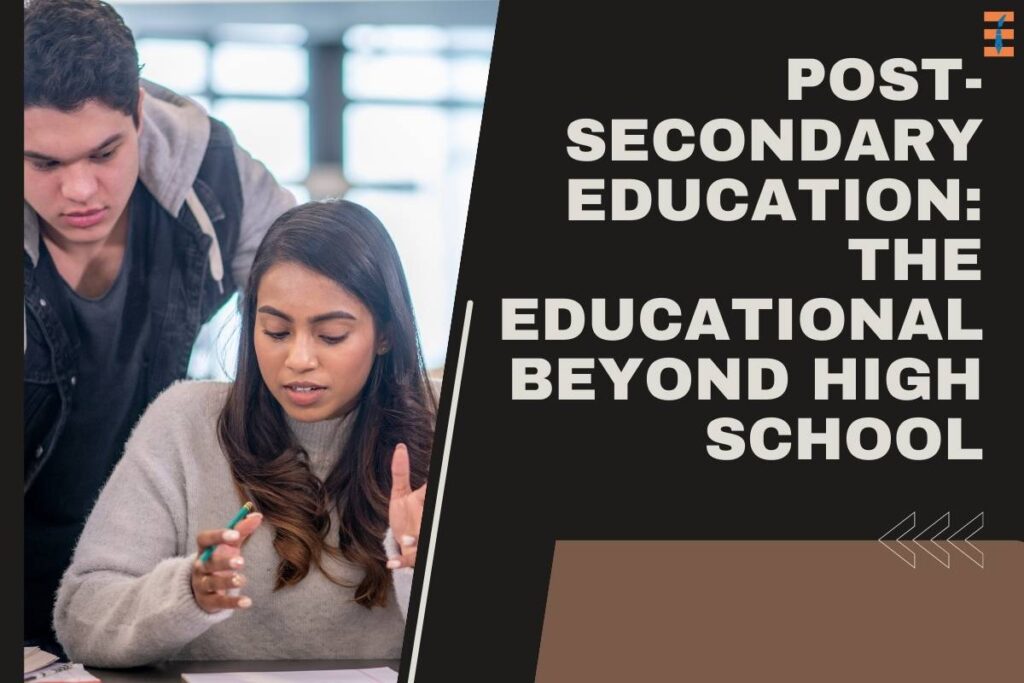
Post-secondary education emerges as a transformative phase, beckoning individuals to explore a vast array of opportunities beyond the confines of high school. Understanding the intricacies of post-secondary education, delving into its varied applications, exploring concrete examples, and unraveling the terminologies associated with this educational realm can significantly empower individuals as they embark on this enriching journey.
Defining the Essence of Post-Secondary Education
It is also commonly referred to as tertiary or higher education and is a broad term encapsulating diverse learning experiences that follow the completion of secondary schooling. It signifies a pivotal shift from the generalized nature of high school education to a more specialized and in-depth exploration of academic and professional interests. This phase lays the foundation for advanced knowledge acquisition, skill development, and the pursuit of specialized qualifications that extend beyond the parameters of secondary education.
Examples Illuminating the Diversity of Post-Secondary Education:
1. universities and colleges.
The traditional pursuit of a bachelor’s degree remains one of the most prevalent paths in post-secondary education. Universities and colleges offer extensive programs spanning an array of disciplines, providing students with the opportunity to specialize in subjects aligned with their passions and career aspirations.
2. Community Colleges

Serving as accessible gateways to higher education, community colleges offer two-year associate degree programs. These programs often act as stepping stones for individuals intending to transition to a four-year university, providing a cost-effective and flexible alternative.
3. Vocational and Technical Schools
For those inclined towards hands-on learning and specific vocational training, vocational and technical schools present tailored programs in trades, technology, healthcare, and other specialized fields. These institutions prioritize practical skill development, preparing students for direct entry into the workforce.
4. Professional Certifications
Acknowledging the evolving landscape of professions, this education also includes avenues for acquiring professional certifications. These certifications validate expertise in specific areas, enhancing an individual’s employability and professional credibility.
5. Online Learning Platforms
The digital revolution has ushered in an era of flexibility and accessibility through online learning platforms. Massive Open Online Courses (MOOCs) and digital certifications provide learners worldwide with the opportunity to engage in post-secondary education without geographical constraints.
Applications:
1. career advancement.
One of the primary applications of this education lies in the realm of career advancement . Many professions demand specialized knowledge and skills that can be acquired through higher education, positioning individuals for advanced and fulfilling career opportunities.
2. Skill Development
Post-secondary education, whether through traditional degree programs or vocational training, places a strong emphasis on skill development. These acquired skills enhance an individual’s competitiveness in the dynamic job market, contributing to professional success.
3. Research and Innovation
Universities, as key players in post-secondary, contribute significantly to research and innovation. The pursuit of advanced degrees fosters an environment of inquiry, critical thinking, and discovery, resulting in advancements across diverse fields.
4. Personal Growth
Beyond the academic and professional realms, post-secondary education fosters personal growth. It encourages critical thinking, independence, and a broader understanding of the world, shaping individuals into well-rounded contributors to society.
Terminologies: Navigating the Lexicon of Higher Education:
- Undergraduate: Refers to students pursuing their first degree, typically a bachelor’s degree.

- Graduate: Encompasses students pursuing advanced degrees beyond the undergraduate level, such as master’s or doctoral degrees.
- Degree Programs: Structured courses of study leading to academic degrees. Common types include Associate, Bachelor’s, Master’s, and Doctorate.
- Semester/Quarter: Academic terms during which courses are offered, with varying lengths of duration.
- Major/Minor: The primary subject of study (major) and secondary area of focus (minor) within a degree program.
- Alumni: Individuals who have graduated from a particular institution, forming a network of former students.
The Decision-Making Process:
Embarking on the journey of post-secondary education necessitates thoughtful consideration of various factors:
- Career Goals: Identifying career paths aligned with personal interests and aspirations is crucial. Certain professions may require specific degrees or certifications.

- Learning Preferences: Considering the preferred learning environment—be it a traditional campus, online platform, or hands-on vocational training—helps match individual learning styles.
- Financial Planning: Evaluating the cost of education, potential financial aid options, and the return on investment in terms of future career opportunities aids in informed decision-making.
- Researching Institutions: Exploring institutions that offer programs aligned with career goals involves considerations such as faculty reputation, available resources, and industry connections.
- Personal Development: Reflecting on how post-secondary education can contribute not only to professional growth but also to personal development and fulfillment is paramount.
Post-secondary education unveils a dynamic and multifaceted landscape, offering diverse avenues for individuals to explore and excel. Whether pursuing a traditional degree, vocational training, or digital certifications, the journey beyond high school holds transformative potential. Informed decision-making, alignment with personal goals, and a commitment to lifelong learning are pivotal in navigating the intricate terrain of post-secondary education, ensuring a fulfilling and impactful educational journey.
Most Popular Stories

Opportunities: Routing Education Policy Jobs in a Self-motivated World
Education policies play a crucial role in creating the future of the evolving education sector. Education policy jobs include a
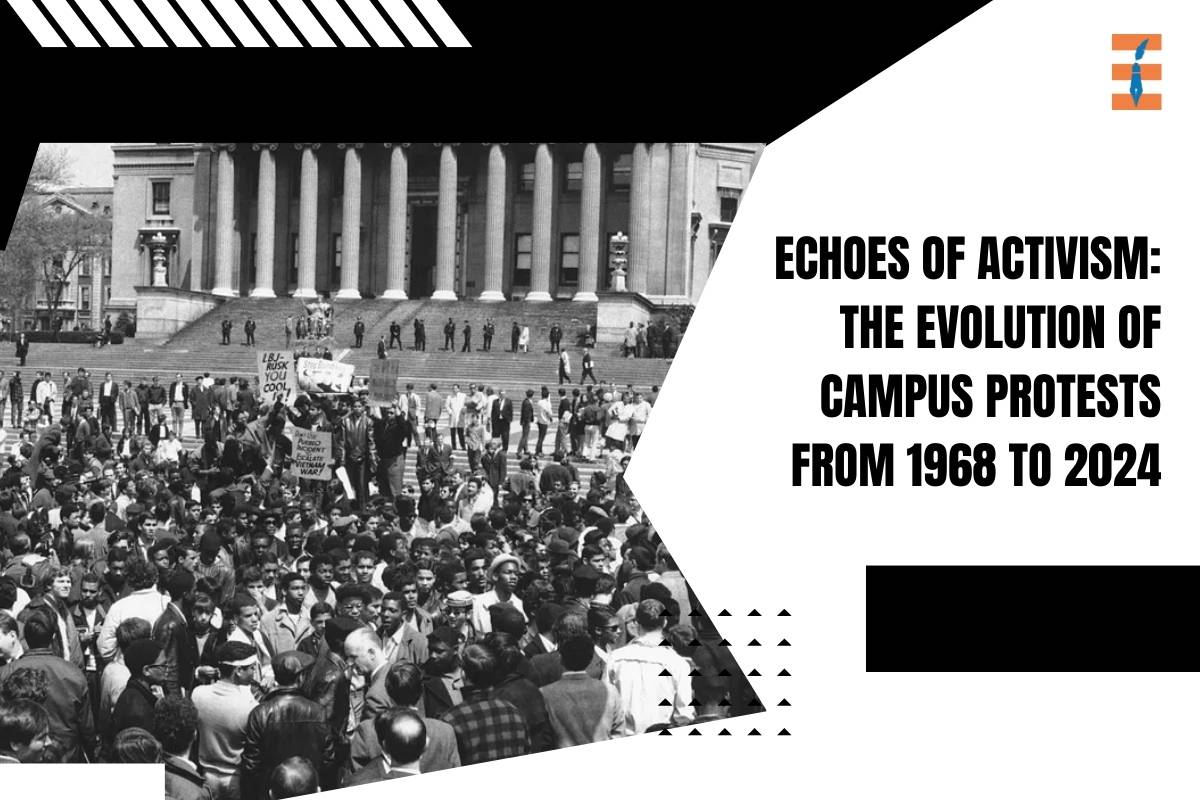
Echoes of Activism: The Evolution of Campus Protests from 1968 to 2024
Source-AP-Photo_John-Duricka-File Fifty-six years ago, the winds of change swept through Columbia University as students took a stand against military research
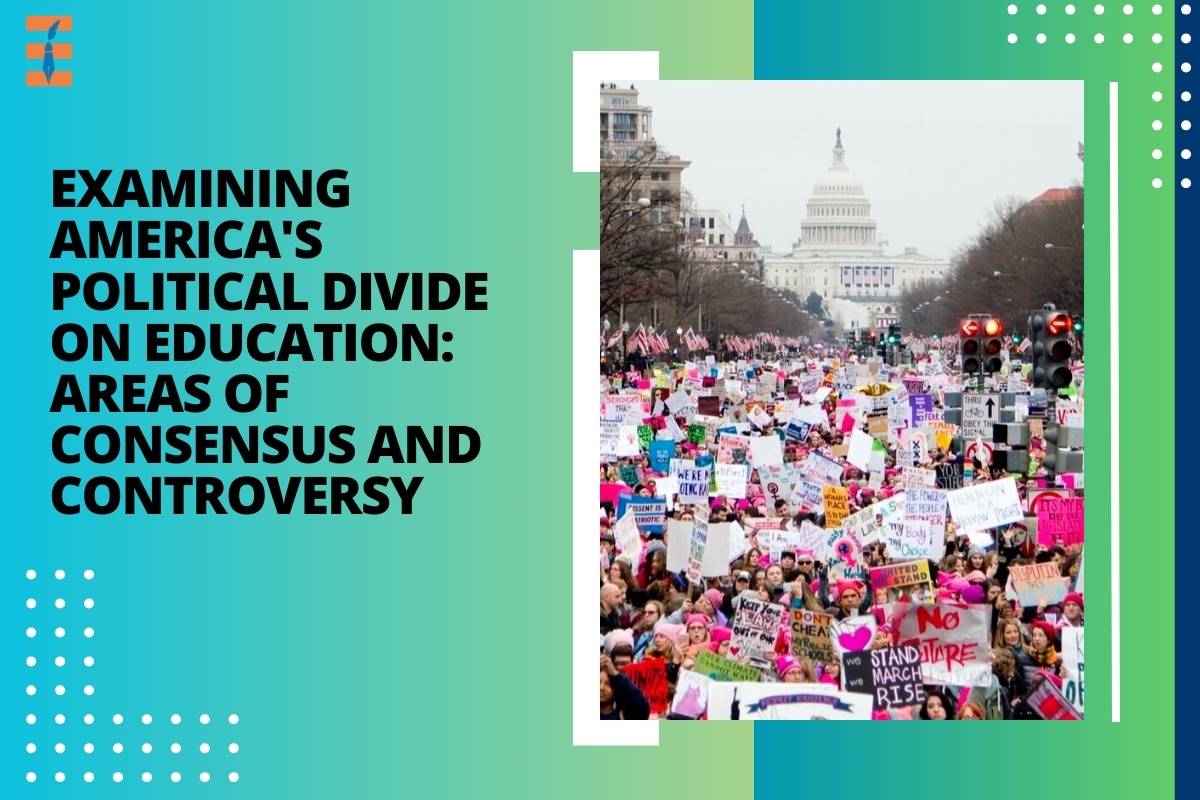
Examining America’s Political Divide on Education: Areas of Consensus and Controversy
Source-Making-Caring-Common In the ongoing debates surrounding education in America, discussions have grown increasingly heated over what should be taught in

Mastering the Essentials: Strategies for Developing 21st Century Skills
In the continuously changing context of today, academic success and expertise in a particular area are not the only marks
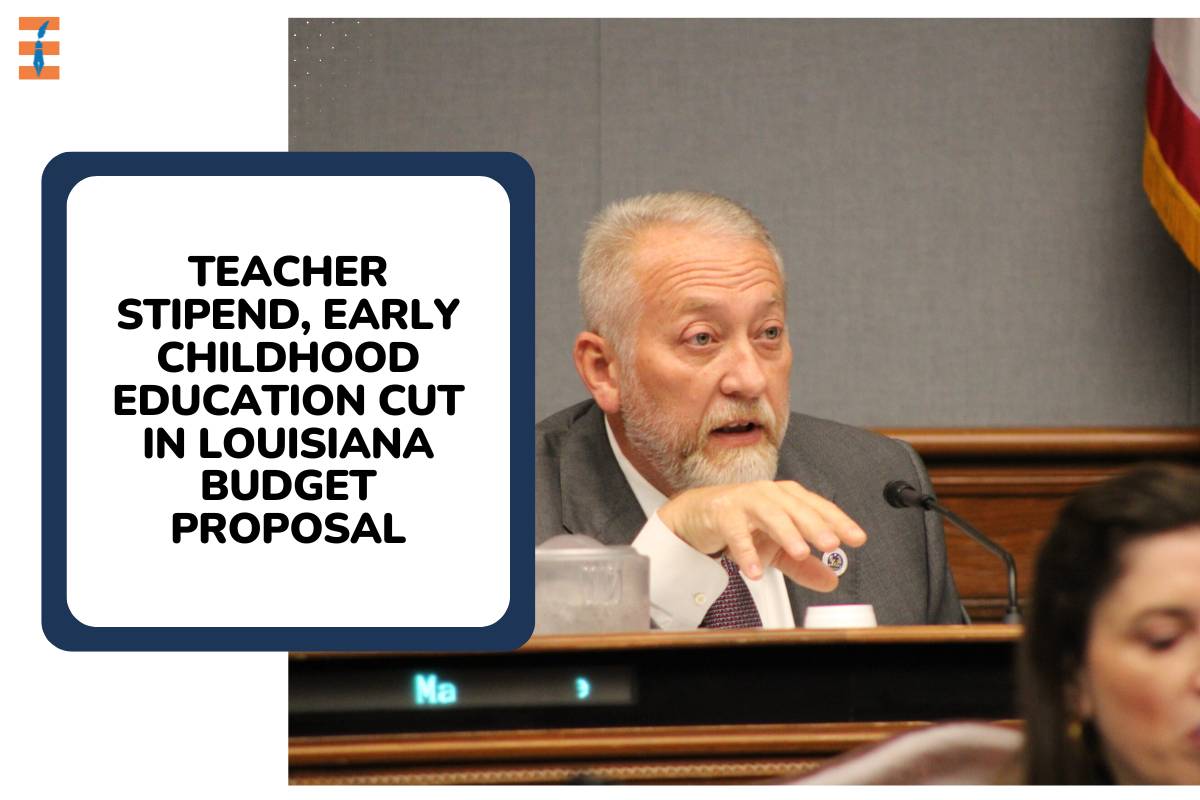
Teacher Stipend, Early Childhood Education Cut in Louisiana Budget Proposal
Louisiana lawmakers are moving forward with a state budget proposal that has stirred controversy and concern among educators and advocates.

Best-Selling Books: Insights into Literary Success
Books, some of which are special, can stand out in this world attracting readers that are thousands in other parts
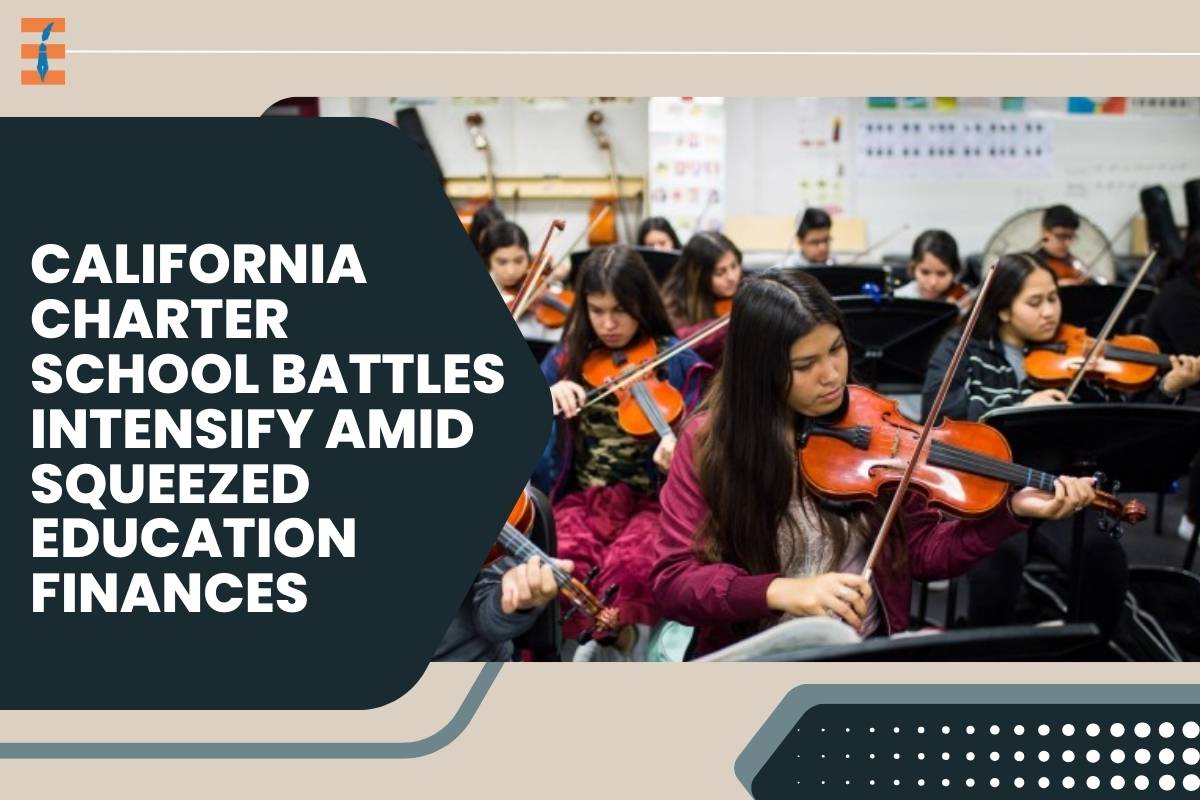
California Charter School Battles Intensify Amid Squeezed Education Finances
Source-Press Telegram California’s public education system, home to nearly 6 million students, is grappling with a complex financial crisis, with
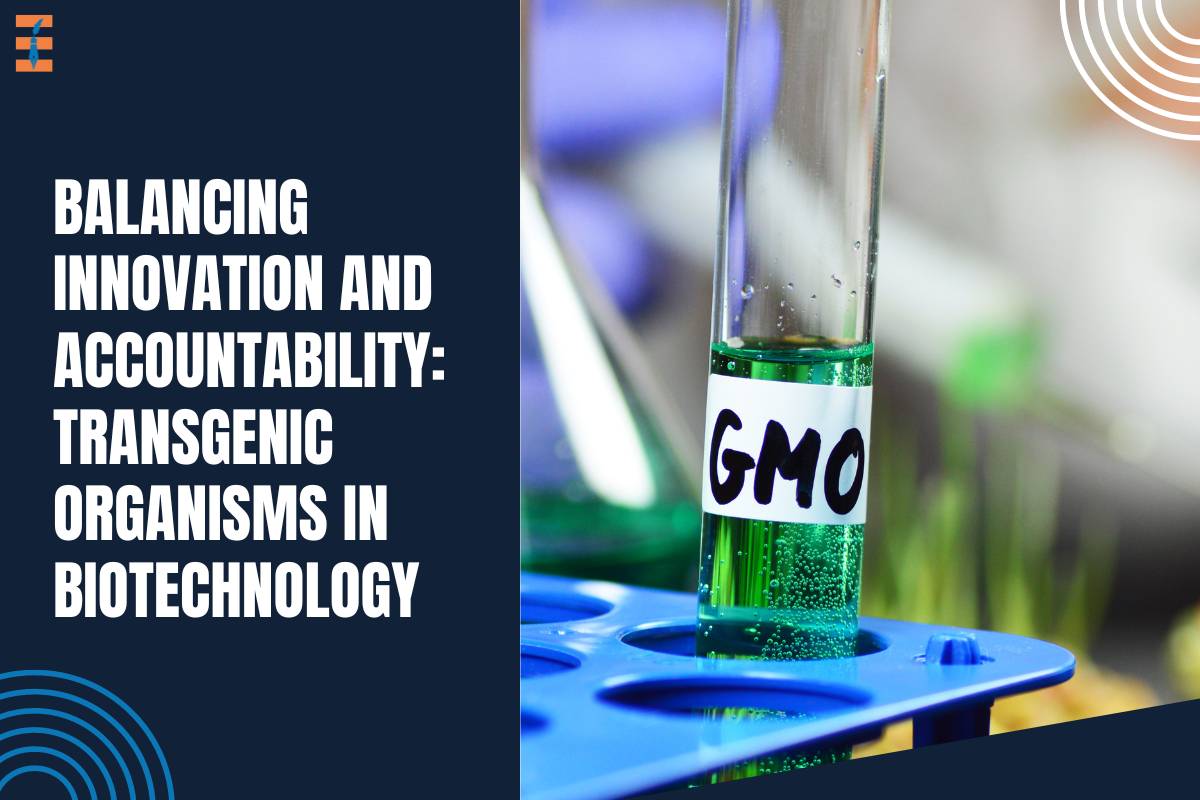
Balancing Innovation and Accountability: Transgenic Organisms in Biotechnology
Biotech bigwigs love transgenic organisms. In essence, what they are referring to is genetically modified organisms (GMOs) which have been
Join Our Newsletter!
Get the latest education updates delivered to your inbox.

Future Education Magazine is an exceptional source of knowledge and resources for those looking to choose the right path in education. Whether you are a student, parent, educator, or education enthusiast, our magazine is committed to providing you with insightful and valuable content.
- Professional Courses
- Privacy Policy
- Terms & Conditions
- [email protected]
- +1 (408) 520-9503
- 3277 S White Rd #41 San Jose, CA 95148, United States
Copyright © 2024: Future Education Magazine | All rights reserved.
Education Resources for Teachers
of Deaf/Hard of Hearing Students
Post Secondary Education and Training
Postsecondary education and training is a very critical area of transition. Frequently, people think automatically of college when considering this transition area. However, it is important to think about what postsecondary really means. “Post” means after and “secondary” means high school, so think about this transition area not only as college, but rather as education and training after high school. All students should be encouraged to pursue education and training beyond high school. These plans should be discussed in IEP meetings even before a student enters high school. For students with hearing loss who want to attend college, it is important that the IEP team makes class selections that will ensure a student has the necessary academic skills and coursework to apply and be accepted into higher education.
Postsecondary schools can include vocational and career schools, community and technical colleges, and four- year colleges or universities. Other types of educational training include military training, short-term vocational schools, on-the-job training, apprenticeships, Adult Basic Education (ABE), or community education classes. IEP teams should be prepared to discuss how a student’s academic skills and coursework may impact enrollment in college or other training.
If students are not academically ready for college but desire postsecondary education in the future, teams should discuss the option of Adult Basic Education programs as a way to continue to build academic skills after high school. A wide range of course offerings can be found in adult education programs. Adult/continuing education programs appeal to a variety of learners: those who are studying to take the GED Test; those who need to improve basic academic skills; and those who wish to take a course for self-enrichment. ABE programs provide free instruction in reading, writing, math, and thinking skills to adult learners with deficits in basic academic skills who wish to improve them, whether for functional application or to prepare for college entrance. Some ABE locations have also started offering career-specific pre-occupational training, as well as short-term training for certificates or licenses (for example, boiler’s license or commercial driver’s license).
In addition to meeting academic requirements, students need to have strong self-advocacy, time-management, money management, and independent living skills in order to be successful in postsecondary settings. By using the Postsecondary Competency Skills Checklist, IEP teams can help the students evaluate their readiness for postsecondary settings.
Students with hearing loss who know their rights and responsibilities are much better equipped to succeed in postsecondary settings. Hard of hearing students who may have had limited accommodations in high school often find they need additional accommodations in post high school settings. It is important for these students to develop and practice self-advocacy skills in high school as they will be expected to independently negotiate for needed services and accommodations after high school. This requires knowledge about Section 504, ADAA, reasonable accommodations, providing needed documentation when requesting services and accessing the disability service office on campus.
ADAA mandates documentation of a disability. For hearing loss, this is verified by a recent audiological evaluation. In some situations, documentation may also include a medical doctor’s diagnosis. When there is a secondary disability, such as vision loss, cognitive processing disorder, psychological disorder, etc., specific evaluations, such as medical, psychological or specialist examinations need to be obtained.
Support services personnel for students with disabilities on college campuses have different titles and work out of different offices from campus to campus. Students should ask for the Office for Disability Services or Office for Special Needs. Students should bring a list of questions when meeting with the disability specialist. The Postsecondary Accommodations Checklist in the Teacher Resources section lists accommodations that might be available through a program’s support services.
The determination and responsibility for provision of reasonable accommodations and aids is considered on an individual basis through collaboration between the student, the postsecondary institution’s Disability Services provider, service agency(s), faculty and administration when necessary. The following definitions relate to the educational supports provided in the postsecondary setting:
Attending college can be an exciting and enriching experience. It can also be a costly one. In addition to tuition, fees, books, and supplies, other expenses to think about include room and board, health insurance, transportation, and spending money. Financial aid is available to help students and their families pay for or supplement payment of educational expenses after high school. Common forms of financial aid include grants, loans, work-study, and scholarships. Students with disabilities may also be eligible for disability-related federal and state programs that offer financial support. Many students use a combination of these financial aid resources. In addition, D/HH students can apply for tuition assistance under Minnesota’s Higher Education Finance Bill Section 4 (135A.165) (Deaf Students; Tuition Assistance) if they: attend a Minnesota state college or university or the University of Minnesota; qualify for a state grant or federal Pell grant; and “depend primarily on visual communication”. Students should check with their college’s financial aid office for further information.
It is imperative to remember that financial aid results in a partnership of the student, parents, postsecondary educational institutions, state and federal governments, and/or private organizations. Such a partnership requires cooperation, communication, and an understanding by each of their responsibilities within the financial aid process. The financial aid office at the school you plan to attend is a good place to begin your search for financial aid information. The financial aid administrator can tell you about student aid available from your state, the school itself, and other sources. An important first step in acquiring financial aid is filling out the Free Application for Federal Student Aid (FAFSA) the year before enrollment.
Postsecondary education teacher resources (PDF)
- Postsecondary Competency Skills Checklist
- Postsecondary Accommodations Resource Checklist
- Talking to my Professors
- High School vs. College
The Power of Knowledge: What Is a Post-Secondary Education?

Table of Contents
What does post-secondary education mean, types of post-secondary education, final thoughts.
Key Takeaways:
- Post-secondary education is an umbrella term that can be used to describe any further education you pursue post your high school graduation or GED completion.
- There are a variety of different types of post-secondary education, including college, vocational schools, continuing education programs and life skills programs.
- Completing a post-secondary education can prepare you for your dream career or progress in your current role.
Suppose you are a senior in high school about to graduate, or you have graduated and are thinking about heading back to school. In that case, you may have heard the term “post-secondary education.” As the name implies, a post-secondary education encompasses any further education you pursue after high school graduation or GED completion (secondary education).
If you want to learn more, read ahead to understand the different types of post-secondary education, the difference between secondary and post-secondary schools and why people choose different paths following high school or their GED completion.
When people consider secondary vs. post-secondary education, most people think of high school vs. college. But, a great way to understand what post-secondary education means is to consider it an umbrella term to describe any education you complete after high school or completion of your GED, which are forms of secondary education. A post-secondary, or tertiary education, is not limited to college pursuits. In fact, post-secondary education consists of many types of education.
While colleges and universities may be some of the most popular types of post-secondary education institutions, there are also vocational schools, technical schools, continuing education and life skills programs. These educational pursuits can prepare you for your desired career or help you reach the next level in your career.
From colleges and universities to life skills programs and vocational and technical schools, the options for post-secondary education are expansive. Here are some of the most common.
Two- and Four-Year Colleges and Universities
Colleges and universities are popular education options for many Americans. According to the Education Data Initiative , more than 20 million people enrolled in undergraduate and graduate programs in 2022. Most college and university programs are two or four years long, but several also offer both undergraduate and graduate programs.
Two- and four-year college and university programs offer different experiences. Four-year programs typically focus on general education and theoretical courses. Alternatively, two-year programs usually offer more hands-on instruction in core classes, giving students work opportunities where they can apply their knowledge.
Two-year colleges also sometimes have fewer students compared to four-year programs, offering smaller class sizes. In terms of cost, two-year colleges tend to be more affordable than four-year colleges since students spend half the time at the institution. Both four- and two-year colleges are great options for students who want to continue their education.
Let’s Connect
Stay in- the-know, stay in-the-know.

Vocational Schools
Another option for post-secondary education is vocational schools. Both trade and technical schools fall under this category. These types of institutions provide skills-based training for careers that are more physical in nature.
Examples of careers you can pursue at vocational schools include:
- Food and beverage management
- Hair and beauty
- Fashion design
- Electrician
- Paralegal studies
- HVAC (heating, ventilation and air conditioning)
- Commercial aviation
- Hospitality
- Daycare management
- Massage therapy
- Travel agent
- Nursing and caregiving
These professions need tactical, hands-on training not commonly offered in a university classroom. Vocational schools are often considered a practical option because they provide hands-on experience that prepares students for a specific job.
Technical Schools
Technical schools fall under the broader umbrella of vocational schools. These schools give associate degrees and other certifications for technical job fields. After attending a technical school, you may need to participate in a training or apprentice program before you become a full-time employee.
Trade School
Another type of vocational school is a trade school. These schools offer training for professions that require many hours of on-the-job experience to enter the field. These schools prepare students to be auto mechanics, electricians, carpenters and medical assistants, just to name a few.
Continuing Education Programs
Continuing education programs are made up of various courses a person can take. These programs can consist of seminars, one-time classes, online courses or full degrees. People seek out these types of programs for a variety of different reasons. One reason may be that your organization requires associates in your role to take a class to advance. Or, you may be a teacher or medical professional that is required to complete these types of courses. On a smaller scale, you may complete this type of course or certificate simply to gain a new skill .
Continuing education programs can help you advance in your career path, or they can help you transition into a new field. These programs are great for increasing personal development and building your resume.
Life Skills Programs
Life skills programs give opportunities to people who may not be able to attend colleges, universities or vocational schools. These programs focus on helping students advance or learn new skills in order for them to live an independent life. These consist of but are not limited to managing a household, traveling, socializing or bookkeeping. These programs are often geared toward people with disabilities who may be unable to attend college and live independent lives.
Post-secondary education includes a variety of options. Commonly, people think of four-year college as the only post-secondary education option and the next step after high school or GED completion. However, college is only one of the options; many different kinds of post-secondary education can train a student for their desired career path. It is important for people of all ages interested in pursuing more education to know about all the possibilities available to them.
To learn more about the importance of post-secondary education and other essential topics, follow philanthropist and entrepreneur Robert F. Smith on LinkedIn .
Aspire to be someone who inspires?
Learn how to become a better leader from philanthropist Smith.
Follow Robert F. Smith on social media for the latest on his work as a business and philanthropic leader.
© Robert F. Smith 2023

Across our Communities
Mbe entrepreneurship & supplier diversity.
1. Provide technical expertise: offer subject matter and technical expertise to catalyze and support community initiatives
E.g., tax/accounting experts to help MBEs file taxes
E.g., business experts to help MBEs better access capital and craft business plans to scale their teams and operations
Access to Capital (CDFI/MDI)
2. Fund modernization & capacity-building and provide in-kind subject matter experts – $30M: help 4-5 CDFIs/MDIs over 5 years modernize their core systems, hire and train staff, expand marketing and standup SWAT team of experts to conduct needs diagnostic, implement tech solution & provide technical assistance
Systems and technology modernization – $10M-15M: Add/upgrade core banking systems, hardware and productivity tools, train frontline workforce on new systems & technology and hire engineering specialists to support customization and news systems rollout – over 5 years
Talent and workforce – $10M: hire and train additional frontline lending staff and invest in recruiting, training, compensation & benefits and retention to increase in-house expertise and loan capacity – over 5 years
Other capacity-building and outreach – $8M: hire additional staff to increase custom borrower and technical assistance (e.g., credit building, MBE financing options, etc.) and increase community outreach to drive regional awareness and new pipeline projects – over 5 years
Education/HBCU & Workforce Development
3. Offer more paid internships: signup onto InternX and offer 25+ additional paid internships per year to HBCU/Black students
Digital Access
4. Issue digital access equality bonds: issue equality progress bonds and invest proceeds into SCI’s digital access initiatives
5. Fund HBCU campus-wide internet – up to $50M in donations or in-kind: Partner with the Student Freedom Initiative to deliver campus-wide high-speed internet at ~10 HBCUs across SCI regions
6. Be an advocate for SCI priorities: engage federal and state agencies to drive policy and funding improvements to better support SCI’s near-term priorities
E.g., Engage the Small Business Administration and Minority Business Development Agency to increase technical assistance programs and annual spend to better support Minority Business Enterprises (MBEs) with capital and scaling needs
E.g., Ask the Federal Communications Commission (FCC) to include multi-dwelling unit connectivity in its new broadband connectivity maps and ask the National Telecommunications and Information Administration (NTIA) to allow non-FCC data in state broadband plans to unlock ~$285M in potential government broadband funding for 5 SCI regions
Directly Fund SCI
7. Invest directly into SCI (coming soon): provide funding for SCI to pool and invest in community initiatives that are most well-positioned for funding and can drive direct community impact.

Memphis, Tennessee
Lead community organization: The Collective Blueprint
Our ambition:
Increase the volume and value of Black-owned businesses – through corporate MBE spend and MBE startups & scaling
1. Scale technical assistance – $15M: fund* to expand technical assistance through business coaches and wrap-around services for 500+ MBEs over 5 years to help them scale from <$1M to $5M+ in annual revenue
2. Standup MBE fund – $15M: standup/scale MBE fund* to offer more flexible access to capital arrangements 400-500 MBEs over 5 years
* Lead organization: The Collective Blueprint ; Contributing local organizations for community strategy include (but not limited to): Community Unlimited , Women’s Business Center South , Epicenter , others
Estimated impact (of all initiatives): 2.3x increase in MBE value & 20K+ new jobs, boosting Black community’s net worth by ~$3B+
Modernize CDFI/MDI systems and tech as well as recruit and upskill talent to increase CDFI/MDI capacity and ability to inject more capital into Black communities
3. Provide loan guarantees – $15M: create a fund* to provide 80% loan guarantees over 5 years to encourage lender participation and inject more capital into the community
4. Conduct advocacy: ask US Treasury & Tennessee State to allow Tennessee CDFIs/MDIs to retain SSBCI capital & offer loan guarantees to boost loan issuance
5. Fund modernization & capacity-building and provide in-kind subject matter experts – $30M: help 4-5 CDFIs/MDIs** over 5 years modernize their core systems, hire and train staff, expand marketing and standup a SWAT team of experts to conduct needs diagnostic, implement tech solution & provide technical assistance
* Leading organizations for community strategy include (but not limited to): Community LIFT , Memphis CDFI Network , etc.
* In partnership with National Bankers Association and Appalachian Community Capital ; CDFIs/MDIs being considered include: Community Unlimited, Hope Credit Union, River City Capital, United Housing Inc, etc.
Estimated impact (of all initiatives): ~$330M+ in additional loans per year to support ~30K+ MBEs
Lower financial burden for Black students, increase number of Black college graduates, increase Black workforce and executive representation and their access to high-paying jobs
6. Standup training hub – $30M: fund* the establishment a world-class training hub that offers certificate-granting STEM and innovation programs in advanced manufacturing, health care, etc. to 10K+ youths
7. Fund SFI program – $7M: fund the Student Freedom Initiative’s Income Contingent Alternative to Parent Plus to support ~15 Black STEM students per year forever at 4 HBCUs**
* Lead organization: The Collective Blueprint ; Contributing local organizations for community strategy include (but not limited to): Greater Memphis Chamber and Workforce Midsouth
** Minority Serving Institutions / HBCUs with STEM programs being considered: Le Moyne-Owen, Baptist Memorial, University of Memphis, Rust College
Estimated impact (of all initiatives): 8K+ additional college graduates and 10K workers with high-paying wages to drive ~$1B+ in economic growth
Increase accessibility, affordability and adoption of high-speed Internet
8. Accelerate digital access initiatives – $75M: partner with local orgs* to invest in setting up internet connections / installing hotspots, offering laptops and supporting adoption (through government subsidy technical assistance and digital literacy) to connect ~135K homes to high-speed internet in the Memphis region
9. Raise community awareness & adoption of Emergency Broadband Benefit: increase door-to-door and community outreach in low-income neighborhoods to get households onto EBB to help connect ~135K unconnected households
* Lead organization: The Collective Blueprint ; Contributing local organizations for community strategy include (but not limited to): CodeCrew
Estimated impact (of all initiatives): ~135K households connected to high-speed internet to unlock ~$2B+ in economic potential

Houston, Texas
Lead community organization: Greater Houston Partnership
1. Scale team – ~$3M: hire 3-4 FTEs over 5 years for One Houston Together * to help companies increase MBE spend from ~2% to 5-10%+ as well as BIPOC workforce advancement and BIPOC board representation
2. Increase MBE certification and scale technical assistance – ~$2M: partner with One Houston Together * and the Houston Minority Supplier Development Council (HSMDC) ** to certify additional MBEs, develop Minority Business Finder database tool and provide resources and services to help local MBEs scale and participate in Pathways to Excellence program
3. Commit to increase racial diversity in supply chain and procurement: increase MBE spend in Greater Houston region* to 5-10%+
* One Houston Together serves as lead (please contact if you are interested in funding these initiatives)
** Houston Minority Supplier Development Council (HSMDC) serves as a partner organization (please contact if you are interested in learning more about this initiative)
Estimated impact (of all initiatives): 2.5x increase in MBE value & ~55K new jobs, boosting Black community’s net worth by ~$12B
4. Fund modernization & capacity-building and provide in-kind subject matter experts – $30M: help 4-5 CDFIs/MDIs* over 5 years modernize their core systems, hire and train staff, expand marketing and standup SWAT team of experts to conduct needs diagnostic, implement tech solution & provide technical assistance
* In partnership with National Bankers Association and Appalachian Community Capital ; CDFIs/MDIs being considered include: Unity National Bank, Unity Bank of Texas, PeopleFund, Houston Business Development Inc, etc.
Estimated impact (of all initiatives): ~$330M in additional loans per year to support ~30K MBEs
5. Fund SFI program – $120M: fund the Student Freedom Initiative’s Income Contingent Alternative to Parent Plus * to support ~1.2K Black STEM students per year forever at 7 HBCUs**
* Student Freedom Initiative serves as lead (main contact if you are interested in learning more and funding this initiative)
** Minority Serving Institutions / HBCUs with STEM programs being considered: Texas Southern University, University of Houston, Prairie View A&M University, Houston Baptist University, University of Houston-Clear Lake, University of Houston-Downtown, University of St Thomas.
Estimated impact (of all initiatives): 5K+ additional college grads & ~600 workers with senior exec positions / high-paying wages to drive ~$0.2B in economic growth
6. Accelerate SCI’s digital access initiatives – up to $80M in donations or in-kind: invest in setting up internet connections / hotspots, offer laptops/Chromebooks and support adoption (through government subsidy technical assistance and digital literacy) to connect ~145K homes to high-speed internet in the Houston region*
7. Raise community awareness & adoption of Emergency Broadband Benefit: increase door-to-door and community outreach in low-income neighborhoods to get households onto EBB to help connect ~145K unconnected households
* Community organization(s) being identified
Estimated impact (of all initiatives): ~145K households connected to high-speed internet to unlock ~$3B in economic potential

Greater New Orleans, Louisiana
Lead community organization: Urban League of Louisiana
1. Scale Black Business Works Fund – $10M: grow the Urban League of Louisiana’s Black Business Works Fund to support ~3K-4K MBEs over 5 years with emergency working capital needs to support/sustain ~$1B+ in annual revenues
2. Scale technical assistance – $20M: fund the Urban League of Louisiana , New Orleans Business Alliance , Thrive New Orleans and Propellor to scale bookkeeping, B2C payment, marketing support & subsidized rent to scale 200+ MBEs from <$1M to $5M+ in annual revenue
Estimated impact (of all initiatives): 2.5x increase in MBE value & 8K+ new jobs, boosting Black community’s net worth by ~$2B+
3. Fund modernization & capacity-building and provide in-kind subject matter experts – $30M: help 4-5 CDFIs/MDIs* over 5 years modernize their core systems, hire and train staff, expand marketing and standup SWAT teams to conduct needs diagnostic, implement tech solution & provide technical assistance
* In partnership with National Bankers Association and Appalachian Community Capital ; CDFIs/MDIs being considered include: New Orleans Business Alliance (community convener), Liberty, TruFund, LiftFund, NewCorp, etc.
4. Subsidize internships & apprenticeships – $40M: fund the New Orleans Youth Alliance , YouthForce NOLA and the Urban League of Louisiana to place and help subsidize apprenticeships, internships and other work-based learning experiences for ~20K young adults in high-pay sectors (e.g., energy)
5. Fund SFI program – $12M: fund the Student Freedom Initiative’s Income Contingent Alternative to Parent Plus to support ~120 Black STEM students per year forever at 3 HBCUs*
* Minority Serving Institutions / HBCUs being considered: Dillard University, Southern University – New Orleans and Xavier University of Louisiana
6. Scale career prep – ~$10M: scale the New Orleans Youth Alliance and YouthForce NOLA with 15-20 coaches over 5 years to equip ~20K young adults with skills for high-paying industries, job search & prep and subsidized transportation
Estimated impact (of all initiatives): ~2K additional college graduates and ~20K workers with high-paying wages to drive ~$1B in economic growth
7. Accelerate SCI’s digital access initiatives – up to $35M in donations or in-kind: partner with New Orleans’s Office of Information Technology & Innovation and Education SuperHighway to invest in setting up internet connections / hotspots, offering laptops/Chromebook and supporting adoption (through government subsidy technical assistance and digital literacy) to connect ~55K homes to high-speed internet in Greater New Orleans region
8. Raise community awareness & adoption of Emergency Broadband Benefit: increase door-to-door and community outreach in low-income neighborhoods to get households onto EBB to help connect ~55K unconnected households
Estimated impact (of all initiatives): 55K households connected to high-speed internet to unlock ~$1B in economic potential

Charlotte, North Carolina
Lead community organization: Charlotte Regional Business Alliance
1. Offer in-kind FTEs: provide 2-5 in-kind FTEs to the Charlotte Regional Business Alliance (CRBA) over 5 years to convene corporate partners, assess their MBE spend, develop pipeline to increase MBE spend to 5-10%+
2. Offer technical assistance expertise: partner with the Charlotte Regional Business Alliance (CRBA) to advise/mentor ~200 MBEs on capital/loan access to help them scale from <$10M to $50M+
3. Commit to supplier diversity: increase MBE spend in Charlotte region to 5-10%+
Estimated impact (of all initiatives): 3x increase in MBE value & ~13K new jobs, boosting Black community’s net worth by ~$2B+
4. Fund modernization & capacity-building and provide in-kind subject matter experts – $30M : help 4-5 CDFIs/MDIs* over 5 years modernize their core systems, hire and train staff, expand marketing and standup SWAT team of experts to conduct needs diagnostic, implement tech solution & provide technical assistance; in-kind experts to also help build out the MBE ecosystem through CDFIs/MDIs, market CDFI/MDI offerings and programs and help draft final loan agreements to qualify borrowers between investment fund(s) and CDFIs/MDIs
* CDFIs/MDIs being considered (examples and not exhaustive): Security Federal Bank, Institute / North Carolina Community Development Initiative, Sequoyah Fund Inc, Self-Help Credit Union, BEFCOR, Aspire Community Capital, etc.
* In partnership with National Bankers Association and Appalachian Community Capital ; CDFIs/MDIs being considered include: Security Federal Bank, Institute / North Carolina Community Development Initiative, Sequoyah Fund Inc, etc.
5. Fund SFI program – up to $10M: fund the Student Freedom Initiative’s HELPS program to support ~1.5K+ students per year at HBCUs* with emergency expenses – e.g., unexpected health costs, late rent payments, etc.
* Minority Serving Institutions / HBCUs in Charlotte that are being considered: Johnson C. Smith University, Johnson & Wales University – Charlotte, Charlotte Christian College
6. Provide in-kind staff: offer 2-5 FTEs to the Charlotte Regional Business Alliance (CRBA) over 5 years to track Black-/Brown-executive representation, convene corporate partners to develop executive pipeline and hiring plans and support corporate partners to increase representation from ~10% to 30%+
Estimated impact (of all initiatives): 2.5K+ additional college graduates and 2.5K workers with high-paying wages to drive ~$0.2B in economic growth
7. Raise community awareness & adoption of Emergency Broadband Benefit: increase door-to-door and community outreach in low-income neighborhoods to get households onto EBB to help connect ~35K unconnected households
Estimated impact (of all initiatives): ~35K households get connected to high-speed internet to unlock ~$700M in economic potential for Charlotte

Birmingham, Alabama
Lead community organization: Prosper Birmingham
1. Fund startups and give access to investor network – $70M: grow the Prosper Health Tech Fund – powered by Gener8tor – and offer venture capital technical assistance to scale 50+ startups from <$1M to $5M+ in annual revenue; near-term priority is to secure $4M in venture investment by end of May 2022
2. Fund technical assistance – $25M: fund Prosper Birmingham , Magic City Match , and Birmingham Business Alliance to establish/expand business advisory programs, renovate and subsidize retail/office space for MBEs and scale coaches & support services (e.g., digital footprint, B2C platforms, accounting & bookkeeping, recruitment, etc.) to help 100+ MBEs scale from <$1M to $5M+ in annual revenue
Estimated impact (of all initiatives): 3x increase in annual MBE revenue & 8K+ new jobs, boosting Black community’s net worth by ~$2B+
3. Fund modernization & capacity-building and provide in-kind subject matter experts – $30M: help 4-5 CDFIs/MDIs* over 5 years modernize their core systems, hire and train staff, expand marketing and standup SWAT team of experts to conduct needs diagnostic, implement tech solution & provide technical assistance
* In partnership with National Bankers Association and Appalachian Community Capital ; CDFIs/MDIs being considered include: First Bancshares, Commonwealth National Bank, TruFund, Sabre Finance, Bronze Valley, etc.
4. Fund scholarships and hire coaches – ~$35M: scale Birmingham Promise fund to financially support 200-250 students per year over 4 years to increase college retention and graduation rates
5. Fund endowment – $2M: support 50 University of Alabama at Birmingham college students per year with housing to reduce their financial burden and increase college retention and graduation rates
Estimated impact (of all initiatives): 6.5K+ additional college graduates & 35K workers with high-paying wages to drive ~$1.2B in economic growth
6. Raise community awareness & adoption of Emergency Broadband Benefit: increase door-to-door and community outreach in low-income neighborhoods to get households onto EBB to help connect ~35K unconnected households
Estimated impact (of all initiatives): 48K households get connected to high-speed internet to unlock ~$700M in economic potential for Jefferson County
What Is Post Secondary Education? Importance
December 28, 2022
What is post secondary education?
Post-secondary education refers to education beyond the high school level. This can include college, university, and vocational or technical training programs. Post-secondary education can be either formal or informal, and it can take place at institutions such as community colleges, universities, trade schools, and vocational schools.
Post-secondary education is often seen as a way to further one’s education and career opportunities. Many post-secondary programs offer specialized training in a particular field, such as business, engineering, or healthcare , and can lead to a certificate, diploma, or degree.
Post-secondary education is not required for all careers, but it can be beneficial for those seeking advanced knowledge and skills in their field or for those looking to enter a competitive job market. In many cases, post-secondary education can also lead to higher earning potential and better job prospects.
Table of Contents

Meaning of Post Secondary Education
Post-secondary education refers to education beyond high school, including college, university, and vocational training programs. It can lead to a certificate, diploma, or degree and offer specialized training in a particular field. Post-secondary education can be beneficial for those seeking advanced knowledge and skills and those looking to enter a competitive job market.
Importance of Post Secondary Education
Post Secondary Education helps ones to upgrade their skills so that he/she can adjust in the market. It can provide students with specialized training and knowledge in a particular field, improve job prospects and earning potential, and offer opportunities for personal growth and networking. Some importance of post secondary education is given below.
1. Specialized training and knowledge
Post-secondary education can provide students with specialized training and knowledge in a particular field, helping them develop the skills and expertise needed for a specific career. For example, a student who completes a degree in engineering will have a strong foundation in the principles of engineering and be well-prepared to enter the field. Similarly, a student who completes a nursing program will have the knowledge and skills needed to work as a nurse. Specialized training and knowledge can be especially valuable in fields that require advanced skills or specialized knowledge, such as healthcare, engineering, or computer science.
2. Improved job prospects
Many employers prefer to hire candidates with post-secondary education, and post-secondary graduates often have better job prospects and higher earning potential. This is especially true in fields that require advanced skills or knowledge, such as those mentioned above. In addition, post-secondary education can demonstrate to employers that a candidate is committed to their career and has a strong work ethic. Even in fields that do not require post-secondary education, having a degree or other advanced training can still be beneficial, as it can set candidates apart from other job seekers and make them more competitive in the job market.
3. Opportunity for personal growth
Post-secondary education can provide students with the opportunity to explore their interests, develop new skills, and learn about different cultures and ways of thinking. For many students, post-secondary education is a time to discover their passions and explore new interests. Whether through coursework, extracurricular activities , or personal exploration, post-secondary education can provide students with a wealth of opportunities for personal growth.
4. Networking opportunities
Post-secondary education can provide students with opportunities to network with professionals in their field and build connections that can lead to future job opportunities. Many post-secondary programs offer internships, co-op programs, or other experiential learning opportunities that allow students to gain hands-on experience and make connections in their field. In addition, post-secondary programs often have strong alumni networks that can provide valuable networking opportunities for graduates.
5. Increased critical thinking skills
Post-secondary education can help students develop critical thinking skills, which can be useful in both their personal and professional lives. Critical thinking involves the ability to analyze and evaluate information, arguments, and evidence in order to make informed decisions. It is a valuable skill in any field, as it helps individuals make well-informed and logical decisions. Post-secondary education can help students develop critical thinking skills through coursework, discussions, and other learning activities that encourage analysis and evaluation.

Popular Reading >> Components of Iway
6. Greater independence
Post-secondary education can help students develop independence and self-reliance as they learn to manage their time, finances, and responsibilities. For many students, post-secondary education is their first experience living away from home and managing their own affairs. This can be a challenge, but it can also be an incredibly rewarding experience as students learn to take responsibility for their own lives and become more self-sufficient. Post-secondary education can provide students with the opportunity to make their own decisions, solve problems on their own, and develop their own independence.
7. Improved communication skills
Many post-secondary programs place a strong emphasis on communication skills, which can be valuable in both personal and professional settings. Communication skills include the ability to speak and write clearly and effectively, as well as listen actively and comprehend what others are saying. These skills are essential for success in any field, as they enable individuals to communicate their ideas and thoughts effectively and to collaborate with others. Post-secondary education can help students develop their communication skills through coursework, presentations, and other learning activities that require them to communicate their ideas and thoughts.
8. Enhanced problem-solving skills
Post-secondary education can help students develop problem-solving skills, which can be useful in a variety of settings. Problem-solving skills involve the ability to identify and analyze problems, develop and evaluate potential solutions, and implement effective solutions. These skills are valuable in any field, as they enable individuals to approach challenges and obstacles in a logical and systematic way. Post-secondary education can help students develop their problem-solving skills through coursework, group projects, and other learning activities that require them to identify and solve problems.
9. Exposure to new ideas
Post-secondary education can expose students to a wide range of new ideas and perspectives, helping them broaden their horizons and deepen their understanding of the world. Through coursework, discussions, and interactions with classmates and professors, students can learn about new cultures, ideas, and ways of thinking. This exposure can help students develop a more global perspective and a deeper understanding of the world around them.
10. Increased confidence
Completing post-secondary education can give students a sense of accomplishment and boost their confidence, which can translate to other areas of their lives. Earning a degree or other post-secondary qualification can be a major accomplishment, and it can give students the confidence to pursue their goals and aspirations. This increased confidence can be especially valuable in the job market, as it can help students feel more prepared and qualified to pursue their desired careers. In addition, completing post-secondary education can give students the confidence to tackle new challenges and pursue further learning and development.
In conclusion, post-secondary education offers a wide range of benefits for students. From specialized training and knowledge to improved job prospects and greater independence, post-secondary education can provide students with the skills and opportunities they need to succeed in their personal and professional lives. In addition, post-secondary education can help students develop critical thinking, problem-solving, communication, and other valuable skills that are useful in any field. Whether you are just starting your post-secondary journey or are considering returning to school, the benefits of post-secondary education are well worth considering.
What is an example of post secondary education?
An example of post-secondary education is a four-year college or university program that leads to a bachelor’s degree. This type of program typically includes a wide range of academic courses in a variety of disciplines, as well as opportunities for hands-on learning through internships or research projects. Students in a bachelor’s degree program may be able to specialize in a particular area of studies, such as business, engineering, or education. Upon completing the program, graduates are typically awarded a bachelor’s degree, which is a higher level of education than a high school diploma.
👉 MORE EXAMPLES OF POST-SECONDARY EDUCATION
Is college post secondary education
College or university programs are a type of post-secondary education that offer a wide range of academic programs at the undergraduate and graduate levels, leading to degrees such as associate’s, bachelor’s, master’s, and doctoral degrees. These programs typically require students to have completed high school or its equivalent before enrolling.
Don't Miss Even Single Update
Be updated, subscribe to the newsletter.
We don’t spam! Read our privacy policy for more info.
Check your inbox or spam folder to confirm your subscription.
Posts you may like
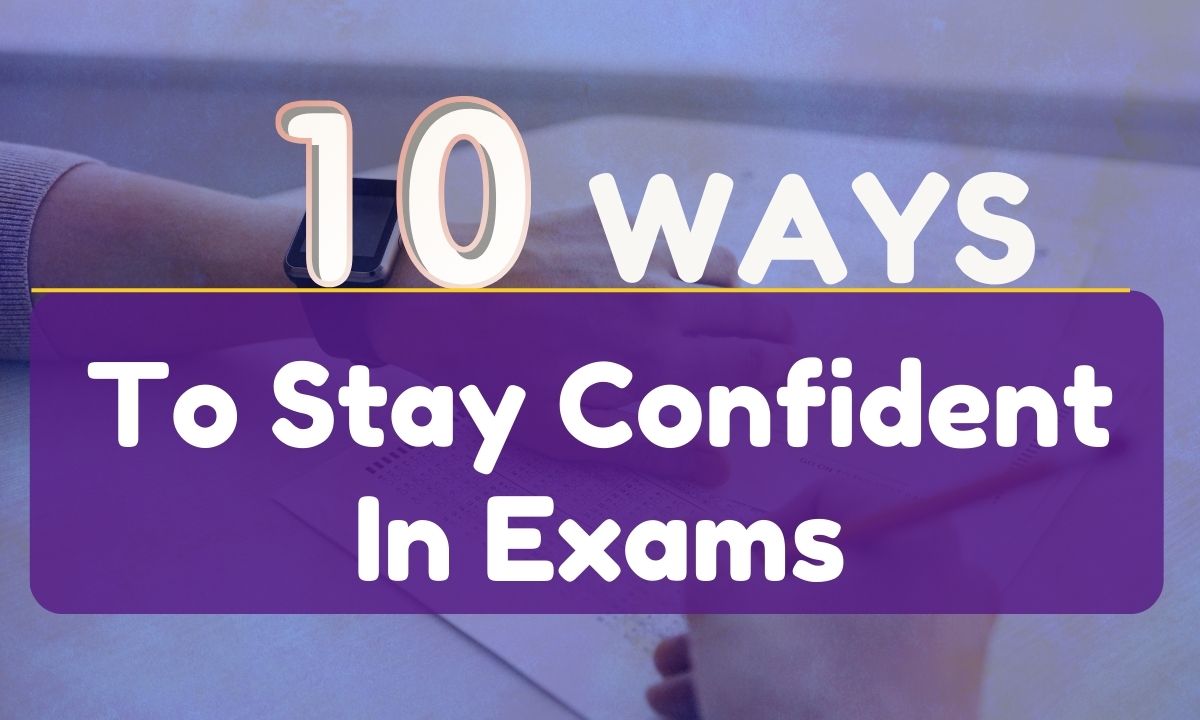
10 Experimented Ways To Stay Confident In Exams
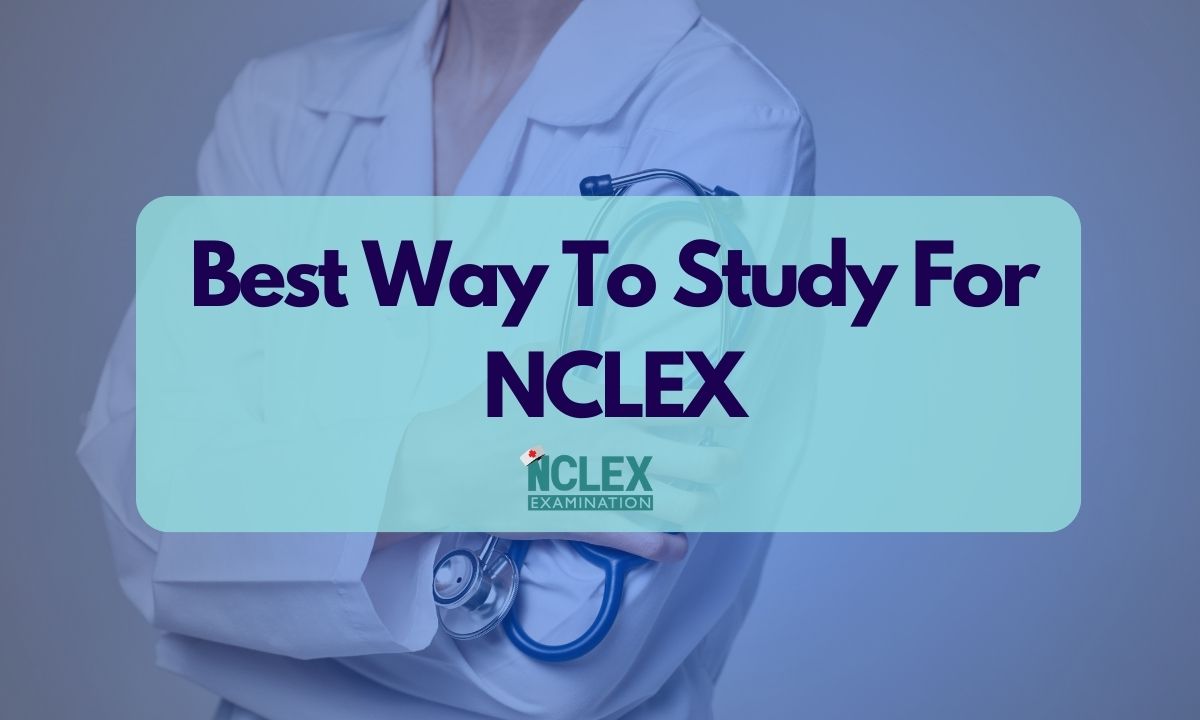
Best Way To Study For NCLEX
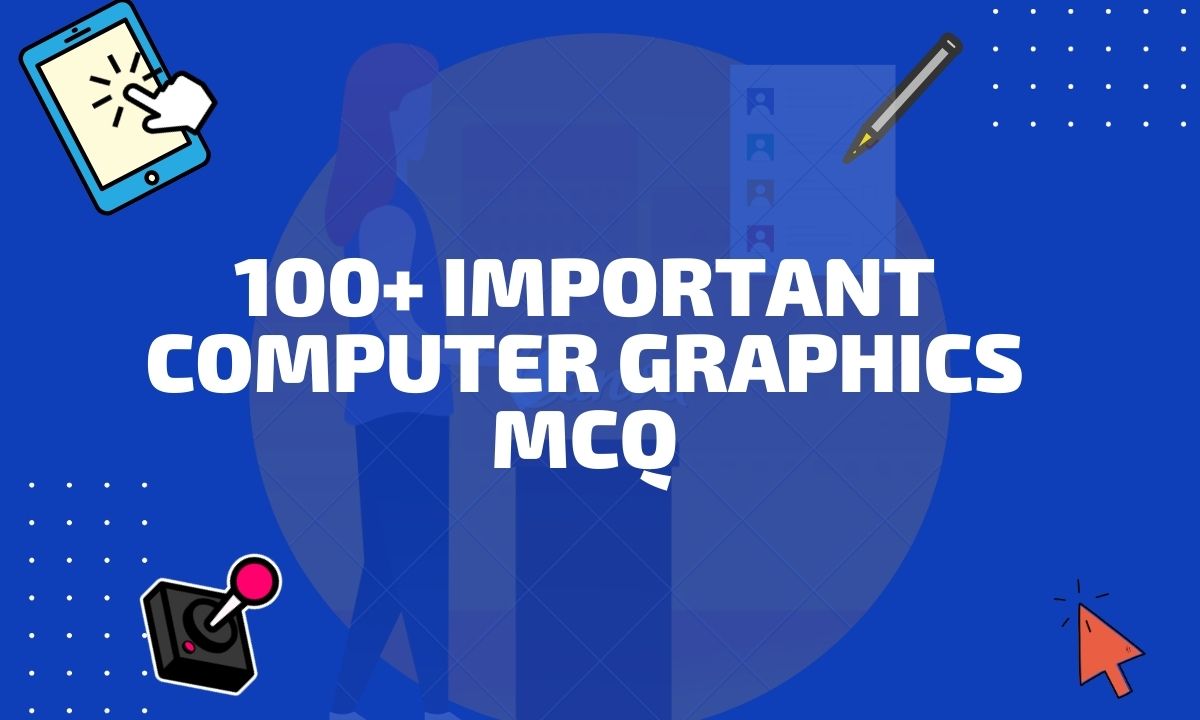
100+ Important Computer Graphics MCQ

Latest Pub GK Questions and Answers For February 2024
5 popular medical insurance companies in texas, 6 examples of post secondary education, leave a comment cancel reply.
Save my name, email, and website in this browser for the next time I comment.
Yes, add me to your mailing list
Notify me of follow-up comments by email.
Notify me of new posts by email.
Myedutown – Edu Web. Search, read, study, and learn about all topics. We cover all updated topics related to Insurance – Online Education – Courses.
Privacy Policy
Post Secondary Education and Associated Degrees

Disponible en Español.
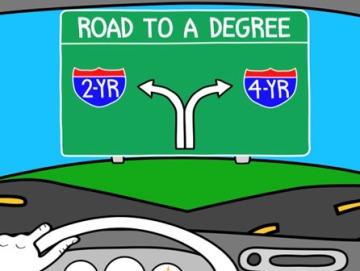
First and foremost, it's important to understand what college is. Simply put, college is a post-secondary educational institution where students can earn a degree or certification in a particular field of study. These institutions can be public or private, and they offer a wide range of programs and majors. College can be a great investment in your future, as it can open up opportunities for better paying and more fulfilling careers.
When it comes to college degrees, one of the biggest decisions a student can make is whether to pursue a two-year or a four-year degree. Both options have their own advantages and disadvantages, and the best choice will depend on the student's individual goals and circumstances.
So you want your child to go to college? So does the University of Arizona!
2 year college degrees, example: pima community college.
- Also known as an associate degree , is typically awarded by community colleges
- Can be completed in a shorter amount of time and at a lower cost than a four-year degree.
- Graduates enter the job market or transfer to a four-year college.
4 year College Degree
Example: university of arizona.
- Known as a bachelor's degree, is typically awarded by colleges and universities.
- Takes around four years to complete and often requires full-time enrollment and more rigorous coursework.
- Requirement for most advanced positions, and it can lead to better earning potential and career opportunities.

Types of Degrees: Associate
- Associate degrees may be a requirement for an entry-level career
- Can also serve as a stepping stone to earning a bachelor’s degree
- Full-time- 2 years
- Offered by : Community Colleges
- Careers : Teaching assistant, Auditing clerk, Technicians, Administration Assistant
Types of Degrees: Bachelor
- Types: Bachelor of Science, Bachelor of Arts, etc
- Take between 4-5 to complete or a minimum of 120 credits
- You to take courses from a variety of focus areas before deciding which track to pursue
- Offered by : Colleges, University
- Careers : Software developers, Financial Managers, Researcher, Teacher
Types of Degrees: Masters
- Want to further your knowledge in the subject, and/or specialize in a particular area
- Extra qualifications can help you stand out from first-degree graduates and impress employers
- Offered by: Universities
- Careers : Lawyers, doctors, teachers, librarians and physicists
Types of Degrees: Doctorate / PHD
- Doctorate is usually the most advanced degree someone can get in an academic discipline
- PhD (Doctor of Philosophy) is a doctoral research degree
- Typical length of a PhD is three to four years full-time
- Careers: Doctor, Mathematician, Statistician, Scientist

Postsecondary Certificate vs. Associate Degree: What’s the Difference?
There are many benefits to earning a bachelor’s degree, which takes about four years to complete. Often, a bachelor’s degree is required to pursue advanced careers and earn a high salary. However, there is a shift happening in higher education. While a bachelor’s degree was once the norm, it is no longer the standard expectation (or path taken) among college students. More and more individuals are going to college to pursue faster, shorter, and career-focused programs that end in a certificate award or associate degree.
In fact, research from Georgetown University’s Center on Education and the Workforce found that the number of undergraduate students pursuing a collegiate certificate or associate degree (50 percent) exceeds those now pursuing a bachelor’s level education (47 percent).
There are many benefits to earning a certificate or associate degree. On one hand, these awards are quick-to-complete, typically taking two years or less. As such, the tuition costs of these programs are often less than a four-year program. On top of these perks, both associate degree and certificate programs are very career-oriented, offering candidates the skills they need to qualify for jobs in their fields (and start earning fast).
If you recognize the value of a college education, but desire a shorter path to completion, you may be considering an associate degree or certificate program. Below we discuss the details of —and differences between—these two types of collegiate awards.
What is a postsecondary certificate?
A postsecondary certificate is an undergraduate academic award offered after the completion of a career-focused program of study. These certificates are awarded by colleges, universities, vocational schools, or technical institutes, and take anywhere from several months to two years to complete. Typically, those who pursue postsecondary certificates do so to gain additional, career-specific skills and qualifications, without committing to a long-term degree program.
While postsecondary certificate programs can vary in length (and intensity), they are generally much shorter in duration than degree programs. Certificate programs are designed to provide practical training and concentrated coursework in a specific field, with a focus on helping students develop skills that are directly applicable to the workforce. Usually, students do not need to complete additional liberal arts course requirements in certificate programs, unless they apply to their field.
Like degree programs, collegiate certificate programs can prepare students for a variety of career outcomes, including jobs in healthcare, business, manufacturing, culinary arts, robotics technology, and many others. The specific requirements and curriculum of each program will depend on the institution and the field of study.
Two primary types of students pursue postsecondary certificate programs: Those who are looking to gain advanced skill sets after completing a high school diploma, and those who are looking to grow their knowledge to reach their career goals. With that in mind, some certificates are offered at the entry-level, while others (such as a certificate in Addiction Counseling ) might need to be paired with additional experience or education requisites. However, both types of students share a common thread, in that they have their sights set on a particular profession or industry. For these individuals, a certificate leads to valuable credentials in the workforce. Some certificates are even stackable, meaning individuals can build upon their education and qualifications over time.
What is an associate degree?
An associate degree is a type of undergraduate academic award offered by higher education institutions, such as colleges, community colleges, technical schools, and universities. Earning an associate degree takes about two years to complete.
Associate degrees are offered in various disciplines, ranging from business to healthcare, the sciences to liberal arts. These programs of study are designed to give students the foundational knowledge and skills they need in a particular, chosen field. While they are shorter to complete than a bachelor’s degree, they still provide valuable credentials and preparation for entry-level positions in many different industries. Sometimes, an associate degree is the standard requirement to enter certain occupations, such as respiratory therapy or dental hygiene.
An associate degree can also serve as a stepping stone toward a bachelor’s degree, which can be valuable for individuals who desire to enter the workforce fast but go back to school later to advance their education. For example, many registered nurses (RNs) pursue an associate degree at first, qualifying them for licensure, but later pursue a bachelor’s to increase their career and earning potential.
Explore Goodwin’s flexible and short-term programs here!
Key differences between an associate degree and a certificate.
Both associate degrees and certificate programs are postsecondary awards that allow individuals to earn a college education and enter the workforce fast, without a long or costly investment in school. While these two options share many similarities, there are key differences between the certificate and associate degree routes.
- Career outcomes
Associate degree and certificate programs are usually career-oriented, meaning they offer a clear path to a certain profession or industry. However, not all programs are created equal. There are associate degree programs out there that do not have a career focus, and allow students to explore different pathways or interest areas. These types of associate degrees, such as an associate degree in General Studies , are great for students who want to get started on their college trajectory or develop a versatile skillset, without a formal career path carved out.
Meanwhile, postsecondary certificate programs always have a specialized curriculum that leads to a specific career. Postsecondary certificate programs offer practical training and/or necessary testing in a certain subject, positioning students to launch their careers right after graduation.
Additionally, it’s worth noting that some careers require an associate degree: respiratory therapists, dental hygienists, funeral directors, and sonographers are just some examples. In these instances, an associate degree is a must. A certificate is simply not an option.
Postsecondary certificates can take anywhere from a few months to a couple of years to complete. Usually, however, they fall within the six to 18-month range. Because of the narrowed focus on the curriculum, students do not spend added time in courses that don’t apply to their major. Rather, they can spend time completing workforce-focused classes and get into a career quickly. It’s for this reason that some institutions are partnering with employers to promote accelerated, career-oriented certificate programs and fill ongoing workforce demands.
Meanwhile, associate degree programs take two years to complete and usually require a full-time commitment in the classroom (on-campus or online). However, there are flexible programs available . While associate degree programs take longer than certificates, they are still a faster alternative to your traditional bachelor’s and master’s degrees.
- Comprehensiveness
Because associate degrees require a longer time commitment, they typically offer a more comprehensive curriculum than the average certificate program. In an associate degree program, you will cover a wider breadth of knowledge with general education courses in communication, mathematics, and the sciences. Meanwhile, in postsecondary certificate programs, you will hone in on more practical skills training related to your field. For example, those earning a certificate in Welding will spend the entirety of their program learning skills and techniques specific to that trade. There are pros and cons to both options, so it is important to do your research and decide which makes the most sense for you and your goals.
- Transferable skills
When you spend more time in school, and cover a broader range of classes, you are more likely to gain a more comprehensive knowledge base and skill set. Now, apply this thinking to the comparison of an associate degree vs. certificate program. An associate degree often includes general education courses that work to enhance one’s skills in critical thinking, written communication, computer literacy, and more. These skills can be applied across an array of industries, and will be valuable even if you decide to change career paths.
On the other hand, postsecondary certificate programs stay true to their career focus, developing the skills that will be directly applicable to the chosen career. In welding, to continue with the example above, those courses will cover topics related to welding safety, principles, machinery, and techniques. In an LPN certificate program, students will take courses that are directly related to nursing, such as clinical skills development and pharmacology. These typically cannot be applied to other career sectors.
- Requirements
Both associate degree programs and postsecondary certificate programs require the completion of a high school diploma or equivalent. While specific requirements for programs will vary, it is worth noting that certificate programs can have even more requirements than the average associate degree.
Typically, associate degree programs require a high school level education and, occasionally, a few prerequisite courses. After that, you can simply apply to the college or university of your choice!
However, postsecondary certificate programs can vary in their requirements. Some are offered at the entry level, with requirements similar to those of an associate degree program. Others, however, might require a certain level of experience, training, or education before applying. Again, be sure to research the requirements for any potential program of interest.
Collegiate certificate vs. associate degree: Which award is right for you?
Both associate degrees and certificate programs are great for those looking to earn a college education fast and get into a career they love. However, as you weigh your options, you must ask yourself which type of program aligns best with your career goals and needs. Ask yourself:
- Do I know the exact career that I want to pursue right now?
- What level of education does my dream career require?
- Will I need further education down the road and, if so, how much?
- How long can I commit to a postsecondary program, from a time and financial perspective?
- Are there programs available in my field of interest, and at what level?
Answering these questions can help you make an informed decision on the best-fit program for you. However, if you still have more questions, or wish to explore the options available at Goodwin, you can always reach out to us. Request more information online to learn more.
Or, explore our various programs by visiting the following links!
- Postsecondary certificate programs
- Associate degree program offerings

Goodwin University is a nonprofit institution of higher education and is accredited by the New England Commission of Higher Education (NECHE), formerly known as the New England Association of Schools and Colleges (NEASC). Goodwin University was founded in 1999, with the goal of serving a diverse student population with career-focused degree programs that lead to strong employment outcomes.
- Daily Crossword
- Word Puzzle
- Word Finder
- Word of the Day
- Synonym of the Day
- Word of the Year
- Language stories
- All featured
- Gender and sexuality
- All pop culture
- Grammar Coach ™
- Writing hub
- Grammar essentials
- Commonly confused
- All writing tips
- Pop culture
- Writing tips
Advertisement
postsecondary
[ pohst - sek - uh n-der-ee ]
She completed her postsecondary education at a two-year college.
Students can begin coursework in aircraft maintenance at the high school level and complete it at a post-secondary institution.
Discover More
Word history and origins.
Origin of postsecondary 1
Example Sentences
This relief also helps our advisers and school counselors to better focus their time on outreach and support to students to stay on track for their postsecondary goals.
The combination of students changing the way they consume postsecondary education and businesses desperate for skilled employees has led to a new wave of strategic business partnerships — with or without the proposed federal grants.
There are thousands of people currently behind bars who deserve to experience the transformative power of a quality postsecondary education.
Now in its fifth year, the Second Chance Pell Experimental Sites Initiative has shown promising growth in closing racial inequities through broad access to postsecondary education.
She also received support from the Jeanette Rankin Women’s Scholarship Fund, which offers financial aid to low-income women older than 35 pursuing postsecondary education.
A third problem was the intense competition for places in higher education and other postsecondary institutions.
Between secondary and higher technical schools fall the advanced technicums, which function on a postsecondary level.
You are using an outdated browser. Please upgrade your browser to improve your experience.

Health & Nursing
Courses and certificates.
- Bachelor's Degrees
- View all Business Bachelor's Degrees
- Business Management – B.S. Business Administration
- Healthcare Administration – B.S.
- Human Resource Management – B.S. Business Administration
- Information Technology Management – B.S. Business Administration
- Marketing – B.S. Business Administration
- Accounting – B.S. Business Administration
- Finance – B.S.
- Supply Chain and Operations Management – B.S.
- Accelerated Information Technology Bachelor's and Master's Degree (from the School of Technology)
- Health Information Management – B.S. (from the Leavitt School of Health)
Master's Degrees
- View all Business Master's Degrees
- Master of Business Administration (MBA)
- MBA Information Technology Management
- MBA Healthcare Management
- Management and Leadership – M.S.
- Accounting – M.S.
- Marketing – M.S.
- Human Resource Management – M.S.
- Master of Healthcare Administration (from the Leavitt School of Health)
- Data Analytics – M.S. (from the School of Technology)
- Information Technology Management – M.S. (from the School of Technology)
- Education Technology and Instructional Design – M.Ed. (from the School of Education)
Certificates
- View all Business Degrees
Bachelor's Preparing For Licensure
- View all Education Bachelor's Degrees
- Elementary Education – B.A.
- Special Education and Elementary Education (Dual Licensure) – B.A.
- Special Education (Mild-to-Moderate) – B.A.
- Mathematics Education (Middle Grades) – B.S.
- Mathematics Education (Secondary)– B.S.
- Science Education (Middle Grades) – B.S.
- Science Education (Secondary Chemistry) – B.S.
- Science Education (Secondary Physics) – B.S.
- Science Education (Secondary Biological Sciences) – B.S.
- Science Education (Secondary Earth Science)– B.S.
- View all Education Degrees
Bachelor of Arts in Education Degrees
- Educational Studies – B.A.
Master of Science in Education Degrees
- View all Education Master's Degrees
- Curriculum and Instruction – M.S.
- Educational Leadership – M.S.
- Education Technology and Instructional Design – M.Ed.
Master's Preparing for Licensure
- Teaching, Elementary Education – M.A.
- Teaching, English Education (Secondary) – M.A.
- Teaching, Mathematics Education (Middle Grades) – M.A.
- Teaching, Mathematics Education (Secondary) – M.A.
- Teaching, Science Education (Secondary) – M.A.
- Teaching, Special Education (K-12) – M.A.
Licensure Information
- State Teaching Licensure Information
Master's Degrees for Teachers
- Mathematics Education (K-6) – M.A.
- Mathematics Education (Middle Grade) – M.A.
- Mathematics Education (Secondary) – M.A.
- English Language Learning (PreK-12) – M.A.
- Endorsement Preparation Program, English Language Learning (PreK-12)
- Science Education (Middle Grades) – M.A.
- Science Education (Secondary Chemistry) – M.A.
- Science Education (Secondary Physics) – M.A.
- Science Education (Secondary Biological Sciences) – M.A.
- Science Education (Secondary Earth Science)– M.A.
- View all Technology Bachelor's Degrees
- Cloud Computing – B.S.
- Computer Science – B.S.
- Cybersecurity and Information Assurance – B.S.
- Data Analytics – B.S.
- Information Technology – B.S.
- Network Engineering and Security – B.S.
- Software Engineering – B.S.
- Accelerated Information Technology Bachelor's and Master's Degree
- Information Technology Management – B.S. Business Administration (from the School of Business)
- View all Technology Master's Degrees
- Cybersecurity and Information Assurance – M.S.
- Data Analytics – M.S.
- Information Technology Management – M.S.
- MBA Information Technology Management (from the School of Business)
- Full Stack Engineering
- Web Application Deployment and Support
- Front End Web Development
- Back End Web Development
3rd Party Certifications
- IT Certifications Included in WGU Degrees
- View all Technology Degrees
- View all Health & Nursing Bachelor's Degrees
- Nursing (RN-to-BSN online) – B.S.
- Nursing (Prelicensure) – B.S. (Available in select states)
- Health Information Management – B.S.
- Health and Human Services – B.S.
- Psychology – B.S.
- Health Science – B.S.
- Healthcare Administration – B.S. (from the School of Business)
- View all Nursing Post-Master's Certificates
- Nursing Education—Post-Master's Certificate
- Nursing Leadership and Management—Post-Master's Certificate
- Family Nurse Practitioner—Post-Master's Certificate
- Psychiatric Mental Health Nurse Practitioner —Post-Master's Certificate
- View all Health & Nursing Degrees
- View all Nursing & Health Master's Degrees
- Nursing – Education (BSN-to-MSN Program) – M.S.
- Nursing – Leadership and Management (BSN-to-MSN Program) – M.S.
- Nursing – Nursing Informatics (BSN-to-MSN Program) – M.S.
- Nursing – Family Nurse Practitioner (BSN-to-MSN Program) – M.S. (Available in select states)
- Nursing – Psychiatric Mental Health Nurse Practitioner (BSN-to-MSN Program) – M.S. (Available in select states)
- Nursing – Education (RN-to-MSN Program) – M.S.
- Nursing – Leadership and Management (RN-to-MSN Program) – M.S.
- Nursing – Nursing Informatics (RN-to-MSN Program) – M.S.
- Master of Healthcare Administration
- MBA Healthcare Management (from the School of Business)
- Business Leadership (with the School of Business)
- Supply Chain (with the School of Business)
- Back End Web Development (with the School of Technology)
- Front End Web Development (with the School of Technology)
- Web Application Deployment and Support (with the School of Technology)
- Full Stack Engineering (with the School of Technology)
- Single Courses
- Course Bundles
Apply for Admission
Admission requirements.
- New Students
- WGU Returning Graduates
- WGU Readmission
- Enrollment Checklist
- Accessibility
- Accommodation Request
- School of Education Admission Requirements
- School of Business Admission Requirements
- School of Technology Admission Requirements
- Leavitt School of Health Admission Requirements
Additional Requirements
- Computer Requirements
- No Standardized Testing
- Clinical and Student Teaching Information
Transferring
- FAQs about Transferring
- Transfer to WGU
- Transferrable Certifications
- Request WGU Transcripts
- International Transfer Credit
- Tuition and Fees
- Financial Aid
- Scholarships
Other Ways to Pay for School
- Tuition—School of Business
- Tuition—School of Education
- Tuition—School of Technology
- Tuition—Leavitt School of Health
- Your Financial Obligations
- Tuition Comparison
- Applying for Financial Aid
- State Grants
- Consumer Information Guide
- Responsible Borrowing Initiative
- Higher Education Relief Fund
FAFSA Support
- Net Price Calculator
- FAFSA Simplification
- See All Scholarships
- Military Scholarships
- State Scholarships
- Scholarship FAQs
Payment Options
- Payment Plans
- Corporate Reimbursement
- Current Student Hardship Assistance
- Military Tuition Assistance
WGU Experience
- How You'll Learn
- Scheduling/Assessments
- Accreditation
- Student Support/Faculty
- Military Students
- Part-Time Options
- Virtual Military Education Resource Center
- Student Outcomes
- Return on Investment
- Students and Gradutes
- Career Growth
- Student Resources
- Communities
- Testimonials
- Career Guides
- Skills Guides
- Online Degrees
- All Degrees
- Explore Your Options
Admissions & Transfers
- Admissions Overview
Tuition & Financial Aid
Student Success
- Prospective Students
- Current Students
- Military and Veterans
- Commencement
- Careers at WGU
- Advancement & Giving
- Partnering with WGU
A Guide To Continuing Education For Teachers
- See More Tags

What is continuing education?
Continuing education (CE) is the post-secondary coursework and specialized training that gives working professionals, including teachers, the opportunity to learn skills that can grow their career, give them a competitive edge, and boost their salary potential. Many higher education institutions offer CE through flexible online degree programs designed for both working and aspiring educators. CE courses allow anyone looking to advance their career the means to do so without having to complete an entire degree program, helping them benefit the students in their classrooms with their personal development.
Continuing education requirements for teachers.
Formal CE requirements vary depending on the state in which the educator resides and their specialty, so it’s advisable for teachers to check with their school or with their state’s teaching board for specific CE guidelines. Most states and schools require teaching professionals to earn a minimum number of continuing education units (CEUs) or continuing education credits (CECs) every five years to renew their teaching licenses. Development courses, advancement courses, workshops, and graduate credit could all be part of this process. Beyond the standard CE requirements educators are expected to complete, many working teachers take CE a step further by pursuing additional degrees and certifications for their own career advancement. Educators are passionate about helping the students in their classroom, and dedicated teachers know that this kind of coursework will help them better understand the changes in education and how they can be involved.
Why is continuing education important for teachers?
Continuing education for educators often consists of in-depth, graduate-level courses. CE is required to maintain state licensure because it keeps teachers up to date on new ideas and best practices in education—and that’s just for starters. CE is important to teachers in a multitude of other ways, including:
Increasing the potential for a promotion or bigger salary.
Improving job performance and image.
Helping transition to a new education career.
Fostering personal interests and development.
Encouraging the development of time management skills that enable better performance.
Increasing job marketability and security.
Prepare educators to move upward, such as to a university or to work with older students.
Providing opportunities for professional networking.
What’s the difference between continuing education and professional development?
While a professional development course can count as a continuing education course , it’s important to distinguish the two. Teachers are awarded CEUs for successfully completing a formal training program, usually with the intention of furthering professional knowledge. Professional development hours (PDHs) are awarded to a person based on contact hours of a presentation or training class.

Options for continuing education.
CE comes in multiple forms and will vary depending on what’s required by your state. They include:
Noncredit online courses. Many teachers pursue this route for CE options because of the flexibility, affordability, and wide availability. Classes typically only take a few weeks and all coursework is completed at home. These courses are often directly applicable to classroom work for students.
Online courses for credit at an accredited institution may cost a little more, but it can be well worth it if you’re pursuing an advanced degree—because the advanced degree can pave the way to a higher position and salary. This is a great way to learn new education trends and strategies to use in your classroom.
In-person classes. CE classes are always on the roster at universities and community colleges and appeal to those who prefer in-person learning. Teaching professionals become the student in these types of courses.
Yearly classes or tests help teachers stay current on changes in the industry and can be held anywhere from online to a college campus or community center.
Entire degree programs or advanced degrees at an online or traditional university can be an exceptionally rewarding option because they help teachers earn CE credits while also preparing them for new opportunities and responsibilities. While a full degree program isn’t required to earn CEUs, this is among the most promising ways for a teacher to advance their career and salary potential.
Workshops, seminars, and one-time classes provide a quick, affordable way for a teacher to meet a professional development requirement and help build a teacher’s skills, confidence, and awareness of current issues and strategies in the teaching profession.
Conferences or lectures offer the opportunity for teachers to learn from experts in their field.
Choosing a continuing education course.
When the time comes to choose a CE course, here’s some advice you can count on to make a well-informed decision.
Examine the program description. Courses vary considerably in quality and value so check for positive reviews or feedback on them before committing. Questions to ask yourself: Does the course take an active-learning approach? Will it include feedback from industry experts? Is its intention adequately and clearly explained?
Assess learning outcomes. This can help distinguish broad overview courses from in-depth programs.
Review faculty credentials. This helps determine if a meaningful program will be presented.
Assess the production quality. Valuable content is valuable content, but poor-quality video and audio to present it risk deterring you from learning. Make sure the program is presented in a professional format with clean visual components and clear audio.
Look at the price. The price tag on a CE course can say a lot about what’s in store. For instance, a surprising low price is usually a red flag that corners will be cut. Boo! Let the course’s amount of content and production quality help you determine if it’s all worth signing up for.
Continuing education is essential for renewing your teaching license, but it can also provide incredible opportunities to advance your career. Fortunately, CE is built into the curriculum of WGU’s online degree programs for aspiring teachers and teachers looking to take their career to the next level. Learn more about these programs , right here, right now.
Ready to Start Your Journey?
HEALTH & NURSING
Recommended Articles
Take a look at other articles from WGU. Our articles feature information on a wide variety of subjects, written with the help of subject matter experts and researchers who are well-versed in their industries. This allows us to provide articles with interesting, relevant, and accurate information.
{{item.date}}
{{item.preTitleTag}}
{{item.title}}
The university, for students.
- Student Portal
- Alumni Services
Most Visited Links
- Business Programs
- Student Experience
- Diversity, Equity, and Inclusion
- Student Communities
How ‘Computer Science for All’ initiatives affect students’ college and career outcomes
Subscribe to the brown center on education policy newsletter, jing liu , jing liu assistant professor of education policy - university of maryland-college park @drjingliu cameron conrad , and cameron conrad ph.d. candidate - university of maryland david blazar david blazar associate professor - university of maryland @david_blazar.
May 1, 2024
- Thirty states have adopted “CS for All” policies, which require all high schools to offer CS coursework, while eight states have gone a step further in requiring all students to take CS as a high school graduation requirement.
- Exposure to high school CS coursework raises CS BA receipt and improves early-career labor market outcomes.
- Although positive long-run impacts of CS course exposure are stronger for historically underrepresented groups, CS course take-up rates are lower among these students.
As the U.S. economy becomes more digitalized, employment in computer and information technology occupations is projected to grow by 10% in the next decade. In response to this increasing demand for technology skills, many states are working to expand CS learning opportunities across K-12 classrooms. Thirty states have adopted “CS for All” policies, which require all high schools to offer CS coursework, while eight states have gone a step further in requiring all students to take CS as a high school graduation requirement. Despite heightened policy interest in CS access, however, research is surprisingly sparse on how the expansion of CS coursework affects postsecondary and labor market outcomes.
In a recent working paper , we aim to fill this research gap by investigating the impact of the expansion of high school CS course offerings. The State of Maryland, which is the context of our study, has rapidly expanded CS course offerings over the last decade. A 2018 law further requires all Maryland high schools to offer at least one “high-quality” CS course aligned with rigorous K-12 CS standards. These “high-quality” courses include foundational courses such as Computer Science Essentials, AP courses such as AP Computer Science Principles, and more specialized programming courses. They are also closely aligned with Code.org’s definition of “foundational” CS courses.
Using rich longitudinal data from the Maryland Longitudinal Data System (MLDS) Center, our study is among the first that offers causal evidence on how access to these “high-quality” CS courses in high school affects college major choice and early-career earnings. Our research design exploits the fact that high schools adopted CS courses at different points in time. In a nutshell, we compare cohorts of students who were exposed to CS to prior cohorts of students from the same high school that were not exposed to CS. This design allows us to estimate causal impacts of both CS course offering and CS course-taking.
Finding #1: Exposure to high school CS coursework raises CS BA receipt and improves early-career labor market outcomes.
Taking a high school CS course leads to a large, five-percentage-point increase in students’ likelihood of earning a bachelor’s degree in CS. Figure 1 shows the estimated effects of taking a CS course in high school on the likelihood of completing a bachelor’s degree for a selection of subjects. Though only the point estimate on CS majors is statistically significant, the negative coefficients for other STEM fields, social sciences, and humanities suggest students may be switching from these fields into CS.
We also find positive impacts on employment and earnings at age 24: High schools offering high-quality CS courses raise students’ likelihood of being employed by 2.6 percentage points and annual earnings by about eight percent. Importantly, these estimates are based on all students, not just those who pursue CS in their later studies or careers.
These findings on degree receipt are similar in magnitude to prior research on STEM course-taking. For example, one study has found that taking advanced secondary science coursework raises STEM degree receipt for male students by six percentage points. In another study, taking advanced secondary mathematics coursework raises engineering degree receipt by nine percentage points for females. Along with these studies, our study suggests that policies that expand high school STEM offerings can increase degree receipt in related fields.
Finding #2: Effects on CS BA receipt and earnings are similar or larger for students who are historically underrepresented in the CS field.
CS, along with many other STEM fields, have historically been dominated by workers who are white or male, and recent policy efforts have been intended to make CS learning and career options more accessible for all . On receipt of bachelor’s degrees in CS, high school CS course-taking has similar and sometimes even larger effects for females, students from lower socioeconomic status (SES) backgrounds, and Black students relative to peer groups that have been better represented in CS fields historically. For example, taking a CS course raises receipt of CS bachelor’s degrees by seven percentage points for Black students, five percentage points for Hispanic students, and six percentages for white students, which are statistically indistinguishable from each other. The biggest difference comes from subgroup analysis by SES. The effect size is nearly eight percentage points for low SES students, while only two percentage points for their counterparts (though it is not statistically significant).
A striking difference across groups emerges when we look at earnings outcomes. In Figure 2, we plot the impact of CS course-taking in high school on earnings for different student demographic groups. The overall effect is also included for comparison. We find that high schools offering CS coursework increase earnings at age 24 by eight percentage points overall (see Figure 2 below). Even more, when we break these estimates out by different student subgroups, we find these earnings effects are driven by historically underrepresented subgroups, including females, those from low SES backgrounds, and Black students. Together, these findings suggest that exposing students to CS coursework in high school can be an effective approach for increasing the supply of CS degree recipients and professionals in the labor market, with enhanced earnings particularly for historically underrepresented groups.
Finding #3: Although positive long-run impacts of CS course exposure are stronger for historically underrepresented groups, CS course take-up rates are lower among these students.
Given the range of long-run benefits of taking a high school CS course, which student groups are most likely to take advantage of this opportunity? We find that high schools offering CS raises the chance of students taking a CS course by about six percentage points for all students, on average, as not all students end up enrolling in the class when offered. Specifically, CS course take-up increases by about 13 percentage points for Asian students, but only six percentage points for Black students and four percentage points for Hispanic students. The contrast is similarly stark for students at different achievement levels: Based on their prior math achievement, the top 25% of students have an increased CS course-taking rate almost three times higher than that of the bottom 25% of students. We also observe slightly lower CS course take-up rates for females and students from low SES backgrounds compared to their counterparts, but the differences are not statistically significant.
Overall, although underrepresented groups of students benefit from taking a CS course if they enroll, they may be less likely to take on this opportunity compared to their peers. Similar lower participation rates among under-represented groups are also observed in other states and nationally as well. For example, in California , female students are much less likely to take CS despite having similar access relative to male peers. National data also show that male students are more than twice as likely to take CS compared to females. Thus, it is critical to identify and remove the barriers underrepresented students face regarding CS course enrollment.
Rapid expansion of CS courses raises questions about the capacity of schools and teachers to fulfill new requirements.
The number of states requiring all high schools to offer CS coursework has increased from just four states in 2017 to 30 states in 2023. We can also expect more states to follow the existing eight states that have mandated CS courses as a requirement for high school graduation. As Maryland and many other states continue their efforts in expanding CS courses in K-12 schools, this fast growth also raises concerns about whether schools are prepared to implement new CS requirements. In particular, a major bottleneck is the shortages of qualified CS teachers, a challenge also faced by many other countries that try to expand CS education. This is not surprising, given that individuals with CS skills and qualifications often have other highly paid job alternatives.
The limited supply of CS teachers also has implications for the current CS teacher workforce. Our own analysis of Maryland data suggests that most high schools that offer CS courses only have one CS teacher, meaning that they do not have colleagues to do co-planning or to share the challenges they encounter in their CS classrooms. In addition, a large share of Maryland CS teachers teaches out of their certified fields without adequate preparation for the necessary skills needed to teach CS.
These staffing challenges require school systems to concentrate efforts to boost the supply of qualified CS teachers as well as provide support to existing CS teachers to ensure quality CS instruction. States may consider allocating funding to expand traditional and alternative pathways to CS teacher certification. Focusing on professional development that provides training on CS content and pedagogy for existing teachers who will be new to teaching CS may also offer the potential to promote impactful CS instruction.
Taken as a whole, our research offers reasons for optimism about the potential of “CS for All” policies, especially given the positive effects of CS course-taking on CS degree recipients and early-career earnings for underrepresented student groups. However, policymakers must also be mindful of the way course expansion policies are implemented and improve the supply of qualified CS teachers to ensure all students benefit from these opportunities.
Related Content
Kelli Bird, Ben Castleman
April 23, 2024
Hannah C. Kistler, Shaun M. Dougherty
April 9, 2024
Melissa Kay Diliberti, Stephani L. Wrabel
March 12, 2024
Education Access & Equity Education Policy Education Technology K-12 Education
Governance Studies
U.S. States and Territories
Brown Center on Education Policy
Election ’24: Issues at Stake
Online only
7:00 am - 8:00 am EDT
Sopiko Beriashvili, Michael Trucano
April 26, 2024
Michael Trucano, Sopiko Beriashvili
April 25, 2024
More From Forbes
Our k-12 expectations are outdated—here’s a better way.
- Share to Facebook
- Share to Twitter
- Share to Linkedin
An engineering student works with his teacher.
An educational model dating back more than a century is getting a fresh look, and that could be the key to rethinking how we approach education and training after high school.
For more than 100 years, since the “high school movement” from 1910 to 1940, our expectations around universal high school completion have grown. Only about 9 percent of adults completed high school in 1910; today, it’s nearly 90 percent. Because we now take completing high school as a given, we don’t recognize how essential this movement has been to individual and social prosperity.
When it comes to postsecondary education, we are at a similar inflection point as we were 100 years ago with high school education. We need to invest in education and once again raise the floor on the skill level of the American workforce. Only about a third of adults have a bachelor’s degree. And while not everybody needs a college degree, everyone needs some type of high-quality education beyond high school to thrive in our increasingly complex workforce.
We tend to name things as we hope they’ll be, and so our “K-12” system defined the expectations of the last century. Today, we’re increasingly hearing about K-14—or, as some say, “14 is the new 12”—signaling an expectation for universal education from kindergarten through community college.
Is there a difference between PreK-14 and popular perceptions of free college, which many people view as an individual benefit for students? It may just come down to phrasing, but I prefer the idea of PreK-14 when described as an investment in stronger families, local economies, and skilled workers. Of course, any investment involves money, so at some point this becomes a conversation about budgets. But consider the need for action: It’s increasingly clear that the model of public K-12 is insufficient for most families—so it is not surprising that we see states developing responses.
Tom Harnisch, vice president of government relations with the State Higher Education Executive Officers Association, said it’s important to persuade students and policymakers that two years of additional education makes economic sense.
OpenAI Gets Better Memory, New Lawsuits, And Sora’s First Music Video
Russian military personnel move into niger air base housing some us troops, madden 25 hall of famer will discontinue his relationship with ea.
“People are going to debate about what is the best policy architecture on that—the first-dollar programs versus the last-dollar programs,” Harnisch said. “And the discussion is about more than community college. Those two years might be at a state university or elsewhere. And there are programs focused on improving transfer pathways and expanding access to dual enrollment opportunities.”
Anthony Carnevale and co-authors Peter Schmidt and Jeff Strohl cited the urgent need for post-high school learning in their book , “The Merit Myth”: “Throughout our nation’s history, we’ve repeatedly raised the bar in defining how much education Americans need,” they wrote.
“Students are no longer assured a living wage with just a high school education. The nation needs to face the fact that people now need at least two years of college to have access to economic opportunity in a complex modern society.”
Not everyone agrees with the 14-year standard—or maybe I should say that not everyone wants to pay for it even though they recognize the need—but the ground is shifting in that direction. For example:
- North Carolina —In the city of Lexington, the school system has established the K14 Initiative . School officials there note that “our world has evolved into a global, knowledge-based economy. Fourteen years of school, two years of postsecondary education, have become a necessity in this modern economy.” This is more than a change in thinking, the school district said: “This is a change of culture.”
- Indiana —Ivy Tech Community College, the state’s public community college system, established its Office of K-14 Initiatives . It features the Indiana College Core, a block of 30 credit hours of college-level coursework that transfers to public colleges and universities. The learning outcomes include half a dozen skills, including quantitative reasoning, written communication, and social and behavioral skills.
- Michigan —The Growing Michigan Together Council, formed to address the state’s sluggish population growth, drafted recommendations to make Michigan the “innovation hub of the Midwest” in part by expanding its PreK-12 system to PreK-14. Gov. Gretchen Whitmer, in her January state of the state address, promoted a “Michigan Guarantee” of free pre-K through community college.
Despite growing awareness of the need for increased education, we’re lagging in efforts to meet that need. College enrollment has been declining for years, especially during the pandemic. Cost is a top concern, as anyone who has spoken with students and families knows. A report from Gallup and Lumina Foundation found that few students understand the actual price of obtaining a bachelor’s degree. And even though the cost to students is usually much less than the sticker price, roughly a third of undergraduates still need to take out loans, federal data show.
Low unemployment and the resulting availability of jobs requiring minimal education are also responsible for enrollment declines—even though those who lack advanced education and skills are too often trapped in dead-end jobs.
And the increasing need for greater skills shows no sign of abating. In fact, according to the Georgetown University Center on Education and the Workforce, by 2031, 72 percent of US jobs will require some type of education beyond high school. Whether that post-high school education comes in the form of an associate degree, a bachelor’s, industry certification, or other credential, the message is clear: To succeed in the current and future economy, Americans need at least 14 years of schooling, not just the 12 we now expect. It is time for policy, funding, and practice to reflect that reality.
Opportunities for that education have been expanding. Dual enrollment —which allows students to earn college credit and even an associate degree while still in high school—has been growing in popularity, as have “promise programs.”
College Promise, a national non-profit that works to build public support for universally accessible postsecondary opportunities, last year counted 425 promise programs across all 50 states, compared with just 53 such programs in 2015.
However we get there, it makes good sense to reset our education expectations to include two years of learning beyond high school—at least as much sense as the high school movement of a century ago. We must do better, and we can’t wait for a perfect answer. We need to make steady improvements with the tools we have now.
We’ve been here before, of course. In 1947, the Truman Commission report, “Higher Education for American Democracy” called for a doubling of college attendance, the integration of vocational and liberal education—and free public education through the first two years of college.
That report calling for a 14-year standard was published 77 years ago. Shouldn’t we be further along by now?

- Editorial Standards
- Reprints & Permissions

IMAGES
VIDEO
COMMENTS
Post-secondary education is defined in the International Standard Classification of Education as levels 6 through 8. Post-secondary education also includes both undergraduate and postgraduate studies. In the United States, plenty of high school students opt to take post-secondary education, with over 21 million students attending after high school.
Post-secondary education is a general term for formal education that people receive after completing high school. There are a number of different kinds of post-secondary education and institutions ...
As I mentioned, a post-secondary degree lets prospective employers know you have obtained specialized skills and information. But there are different types - or levels - of post-secondary degrees, and each one connotes a different level of expertise. Associates Degree. Associates degrees are typically obtained in two years at either a ...
These post-secondary degrees can provide students with the knowledge, skills, and experience to excel in a career related to their studies. ... The coursework in these programs relates specifically to the student's focus. Most educational institutions require candidates to have a bachelor's degree before starting a master's program. Some master ...
Postsecondary Education, also known as tertiary education, is the education level that follows the successful completion of secondary education, often referred to as high school. Postsecondary education includes universities and colleges, as well as trade and vocational schools. Postsecondary education usually culminates with a diploma ...
Post-secondary education is also known as third-level education, higher education, or tertiary education, and is an optional educational path for those who have completed their high-school or GED requirements. The goal of a post-secondary education program is to further train students in specialized skills, preparing them for more-advanced ...
Having access to post-secondary coursework is a way everyone can stay relevant and nimble as an individual who wants to support themselves and possibly a family. To move beyond these generalizations to some hard data, I asked the director of research and evaluation in my district, Township High School District 214, if we could do a meta ...
What is post secondary education? Why is it important? Learn about the pros & cons of higher education, and degrees & learning platforms.
While post-secondary education isn't mandatory, it offers added advantages because it helps students get additional education and develop various skills, which may increase their chances of securing higher-level employment. Students should also consider the salary difference. A significant percentage of high school graduates choose to receive ...
A post-secondary education is important for numerous reasons: financial, health, and civic stability. Beyond external factors, however, is the opportunity for students to learn critical thinking skills. Those skills allow them to decipher all the messages that constantly bombard all of us.
Post-secondary Education The continued shift to a knowledge-based economy means the best opportunities for job prospects and upward mobility will require education and training beyond high school. ... It is commonly measured by GPA, participation in advanced coursework such as Advanced Placement (AP) and International Baccalaureate (IB), as ...
Postsecondary Education Definition. This is also called Tertiary education, the level of education following successful completion of high school, often called secondary school. It is a higher-level education, and it includes universities and colleges, also trade technical and professional schools. The Post education student usually receives a ...
Post-secondary education emerges as a transformative phase, beckoning individuals to explore a vast array of opportunities beyond the confines of high school. Understanding the intricacies of post-secondary education, delving into its varied applications, exploring concrete examples, and unraveling the terminologies associated with this ...
secondary education, such as General Educational Develop-ment (GED) or English as a Second Language (ESL) classes, see chapter 5. Enrollment Enrollment in degree-granting institutions increased by 15 percent between 1992 and 2002 (table 303.10 and figure 12). Between 2002 and 2012, enrollment increased 24 percent, from 16.6 million to 20.6 million.
Watch on. Postsecondary education and training is a very critical area of transition. Frequently, people think automatically of college when considering this transition area. However, it is important to think about what postsecondary really means. "Post" means after and "secondary" means high school, so think about this transition area ...
Key Takeaways: Post-secondary education is an umbrella term that can be used to describe any further education you pursue post your high school graduation or GED completion. There are a variety of different types of post-secondary education, including college, vocational schools, continuing education programs and life skills programs.
Higher education and postsecondary courses. In your courses, you'll learn how to develop a professional philosophy rooted in access and equity, nourish a leadership identity, and work collaboratively with students, staff and faculty. You'll also participate in a practicum, where you'll gain hands-on experience in an area of higher education.
Post-secondary education can expose students to a wide range of new ideas and perspectives, helping them broaden their horizons and deepen their understanding of the world. Through coursework, discussions, and interactions with classmates and professors, students can learn about new cultures, ...
Post-secondary refers to the fact that this education is after your secondary education. Secondary school is high school. Primary school is elementary school and middle school. Around the world, these different grade groups are normally referred to as primary and secondary. There is more to post-secondary education than just college or a trade ...
The difference is that EL students often lack the support to do so. EL students must not only have access to rigorous college preparatory coursework, including high-quality career and technical education programs, but must also have access to college prep resources, such as college counselors and college bridge programs.
Simply put, college is a post-secondary educational institution where students can earn a degree or certification in a particular field of study. These institutions can be public or private, and they offer a wide range of programs and majors. College can be a great investment in your future, as it can open up opportunities for better paying and ...
Raise the Bar: Unlocking Career Success: The Unlocking Career Success interagency initiative aims to reimagine how our nation's high schools prepare all students to thrive in their future careers by blurring the lines between elementary and secondary education, college, and careers. The Department of Education is partnering with the White House ...
A postsecondary certificate is an undergraduate academic award offered after the completion of a career-focused program of study. These certificates are awarded by colleges, universities, vocational schools, or technical institutes, and take anywhere from several months to two years to complete. Typically, those who pursue postsecondary ...
Postsecondary definition: of or relating to education beyond high school. See examples of POSTSECONDARY used in a sentence.
Continuing education (CE) is the post-secondary coursework and specialized training that gives working professionals, including teachers, the opportunity to learn skills that can grow their career, give them a competitive edge, and boost their salary potential.
In another study, taking advanced secondary mathematics coursework raises engineering degree receipt by nine percentage points for females. Along with these studies, our study suggests that ...
Whether that post-high school education comes in the form of an associate degree, a bachelor's, industry certification, or other credential, the message is clear: To succeed in the current and ...